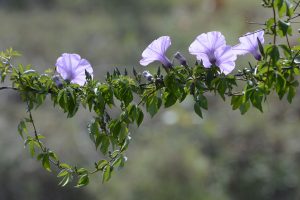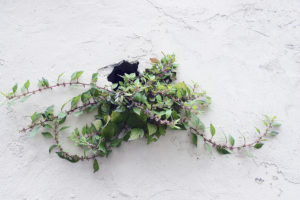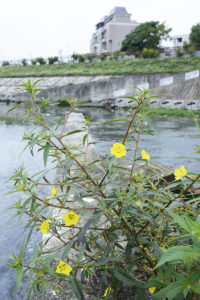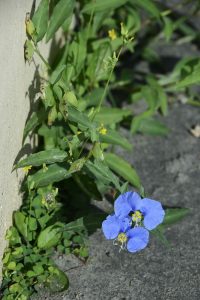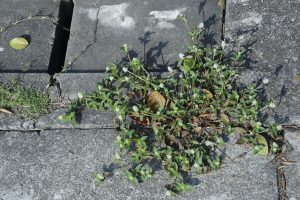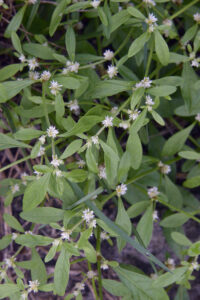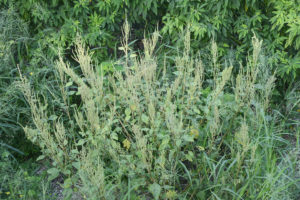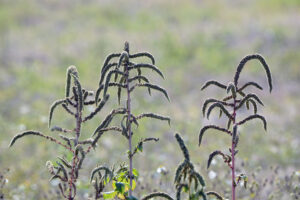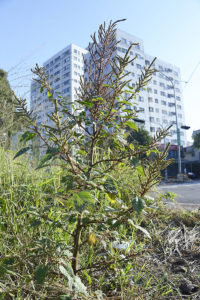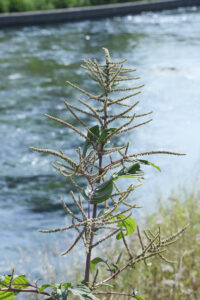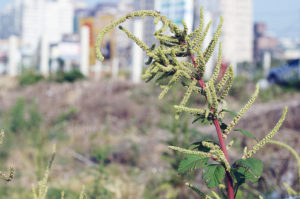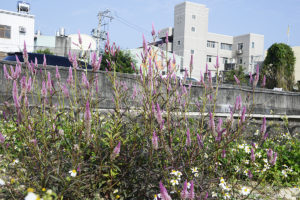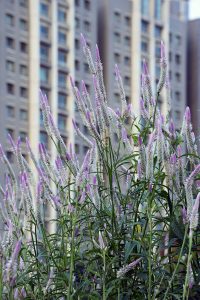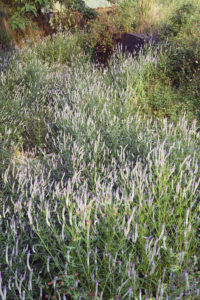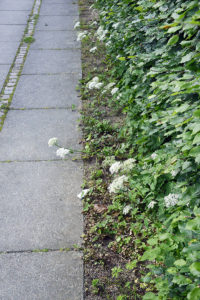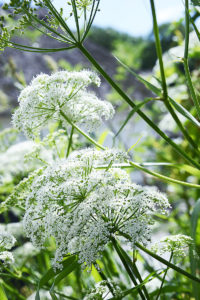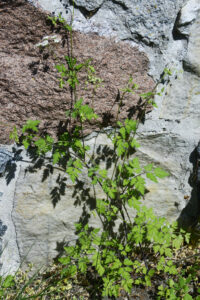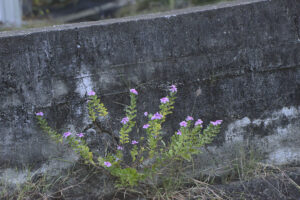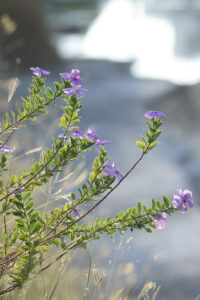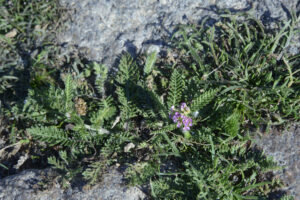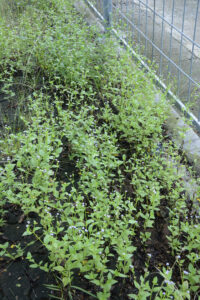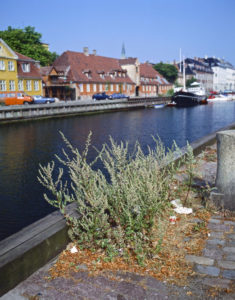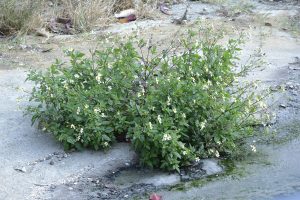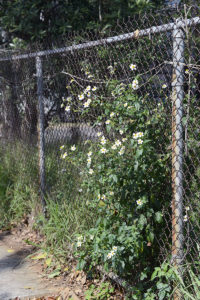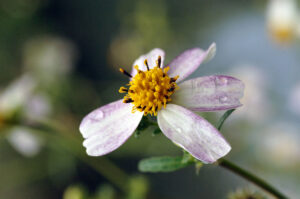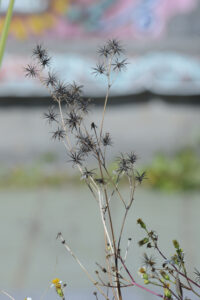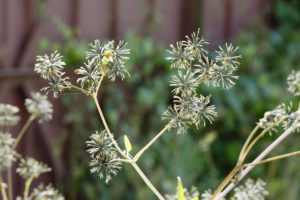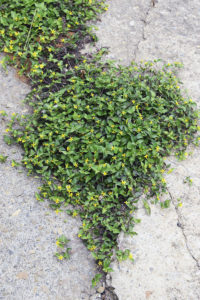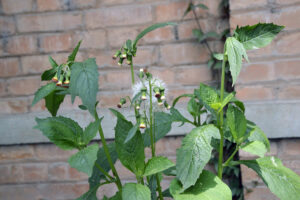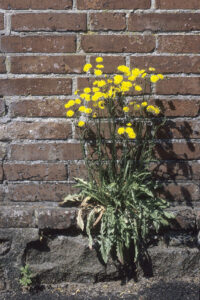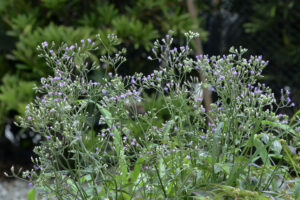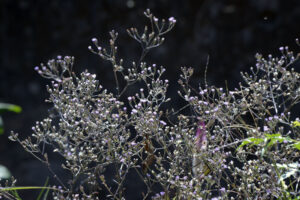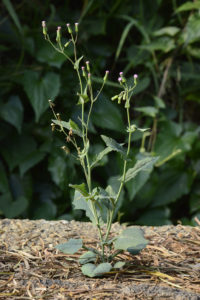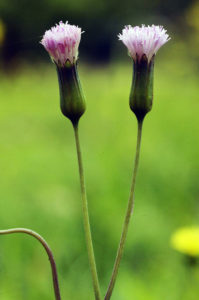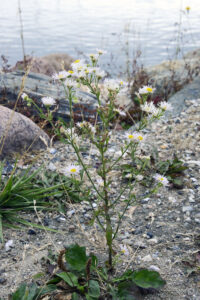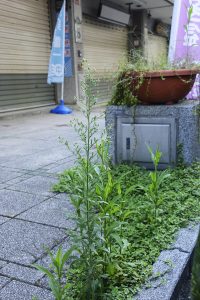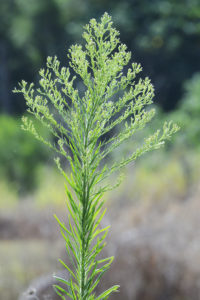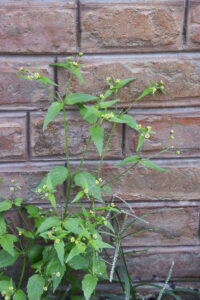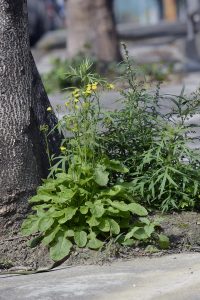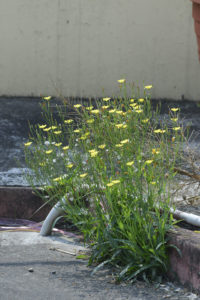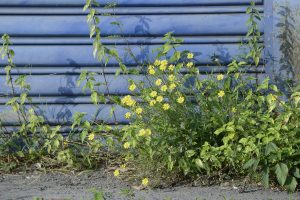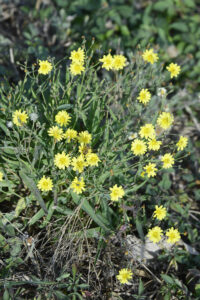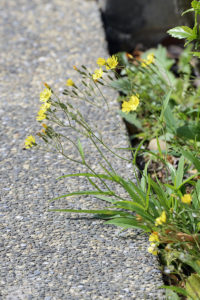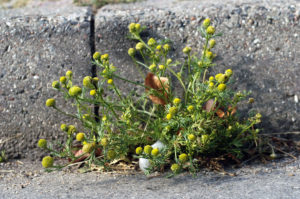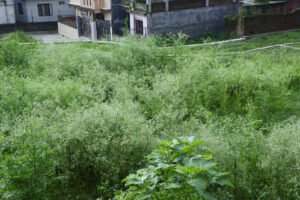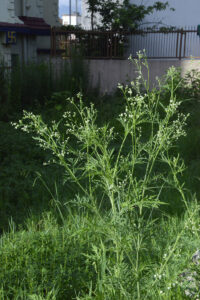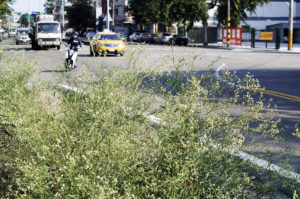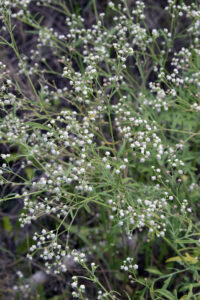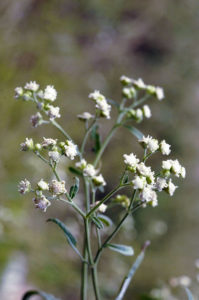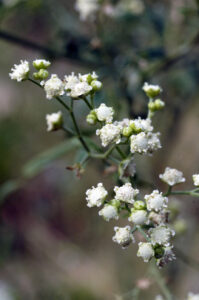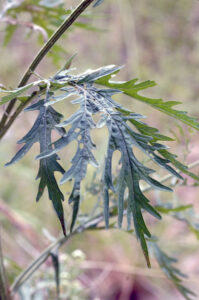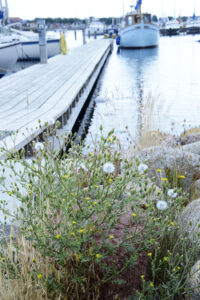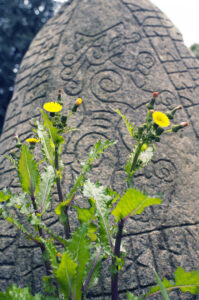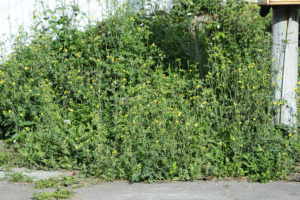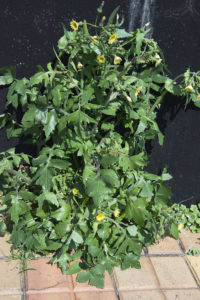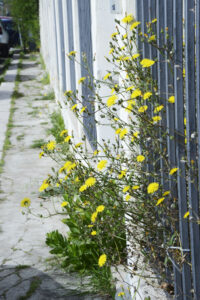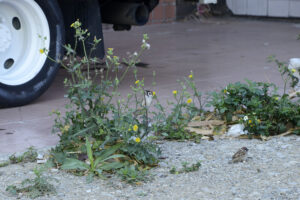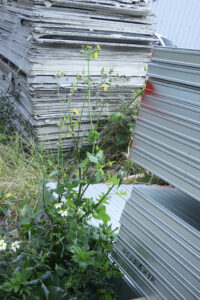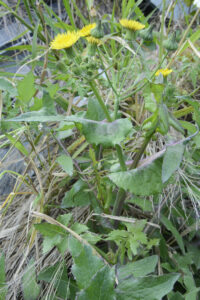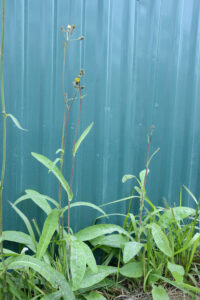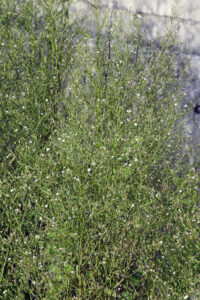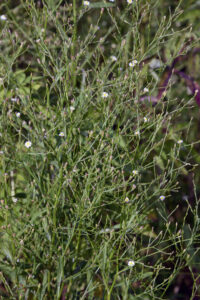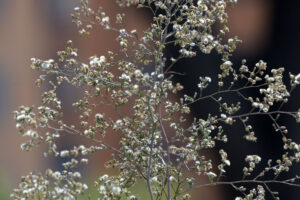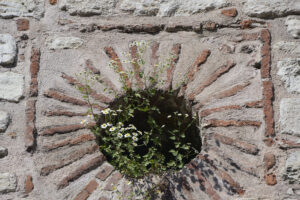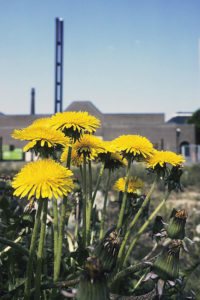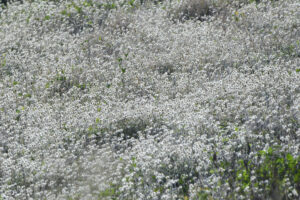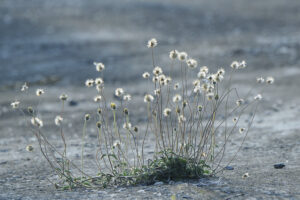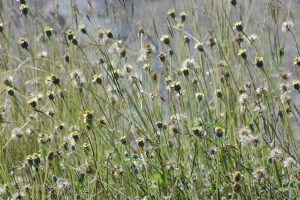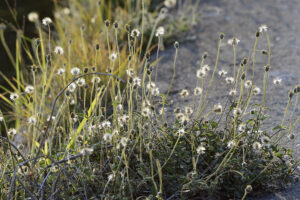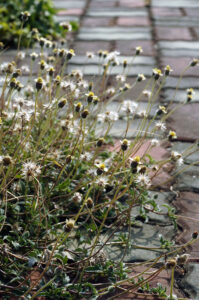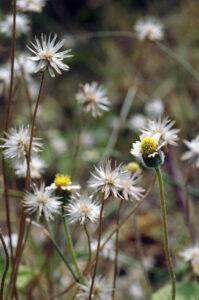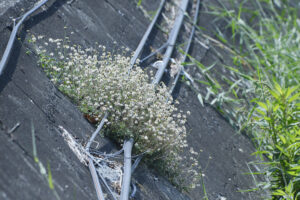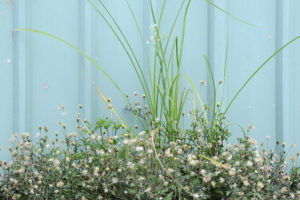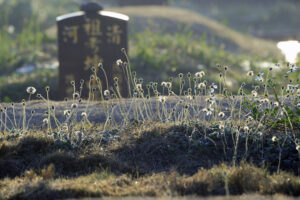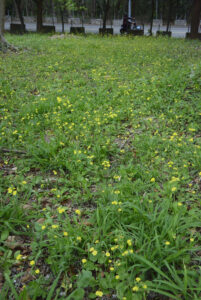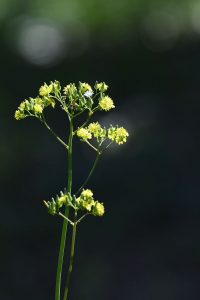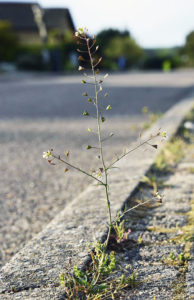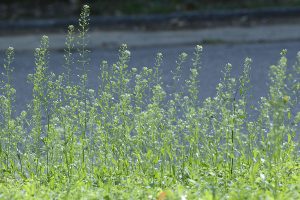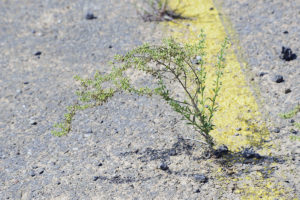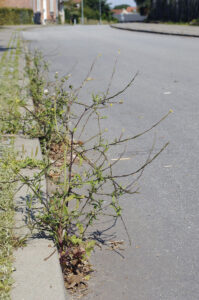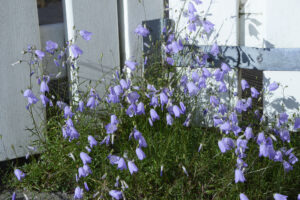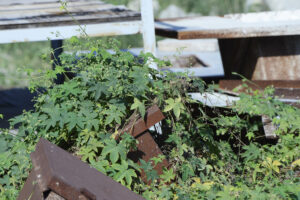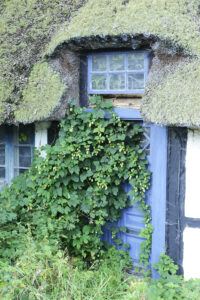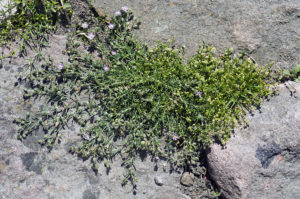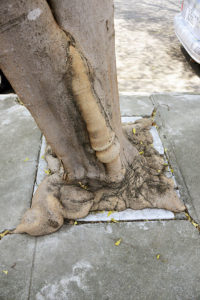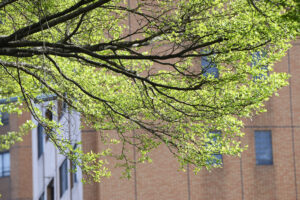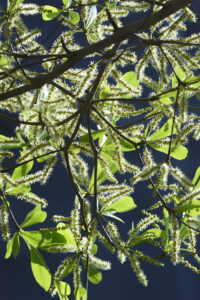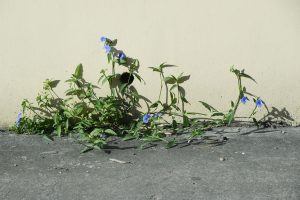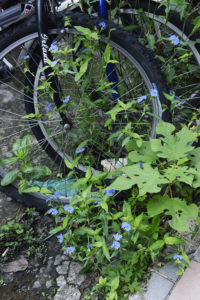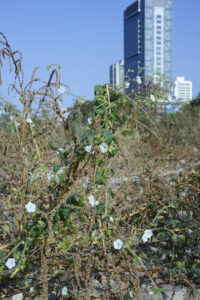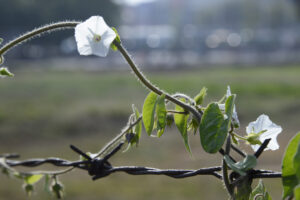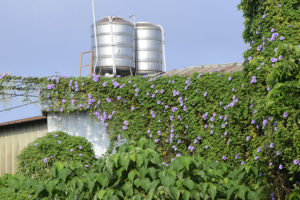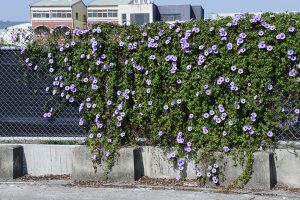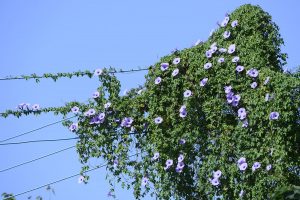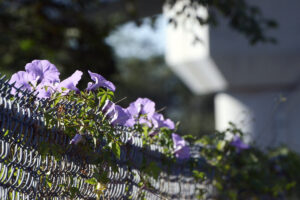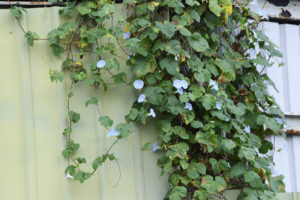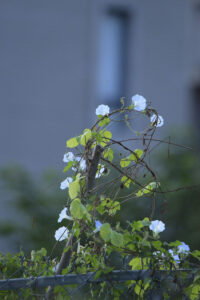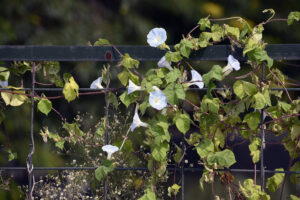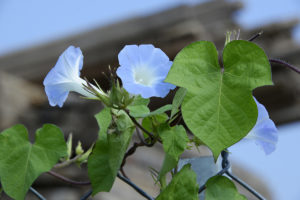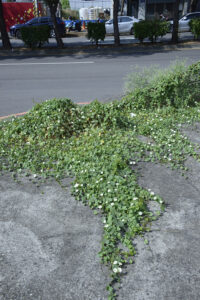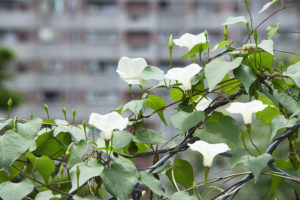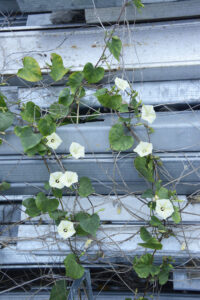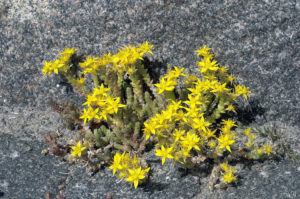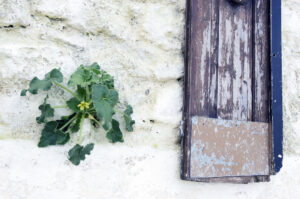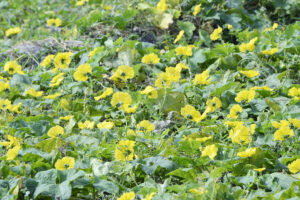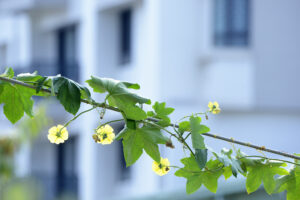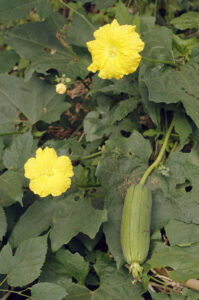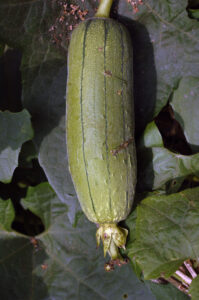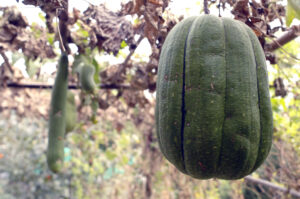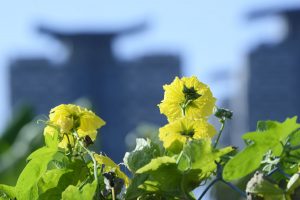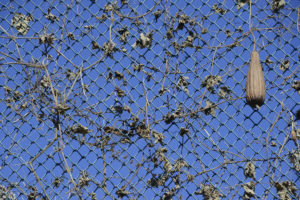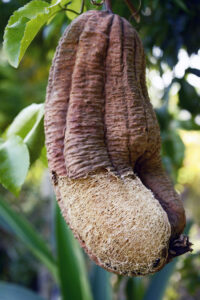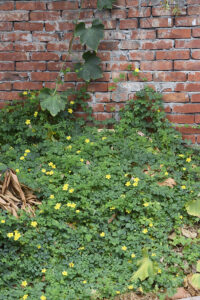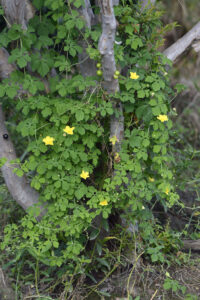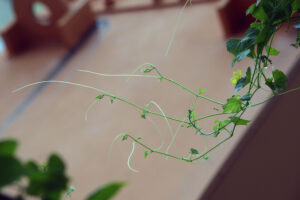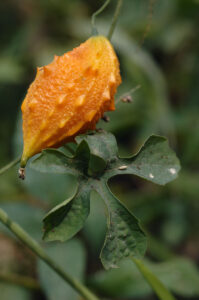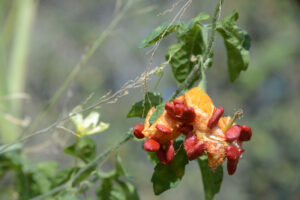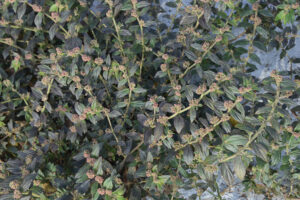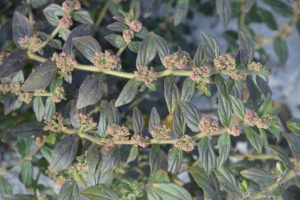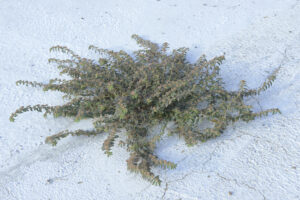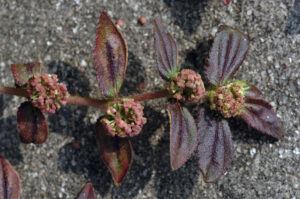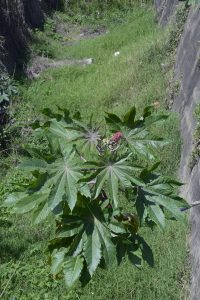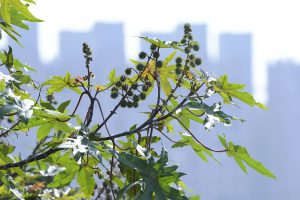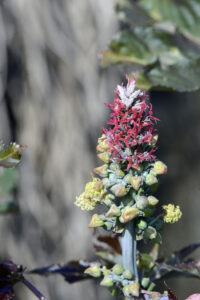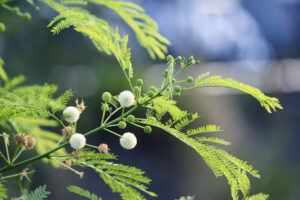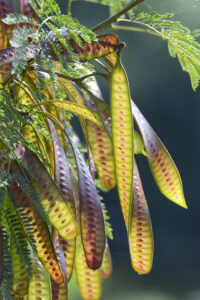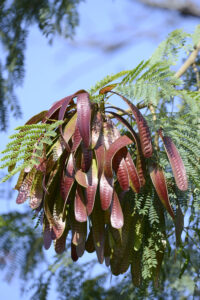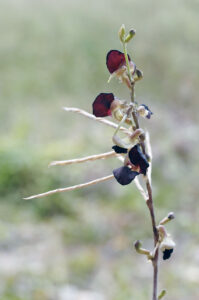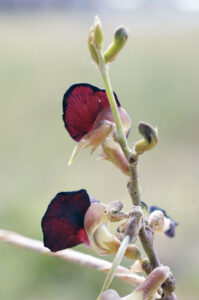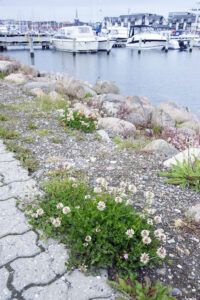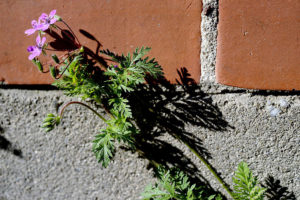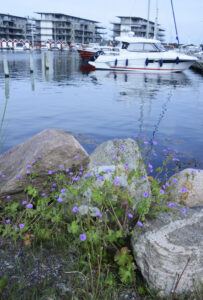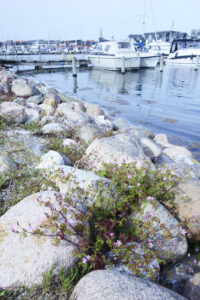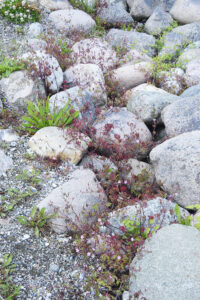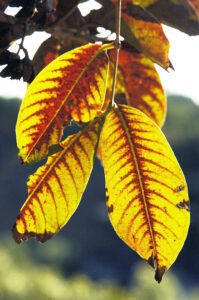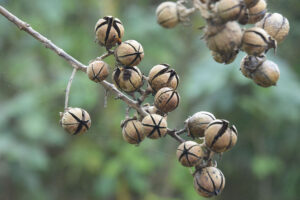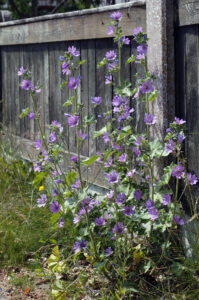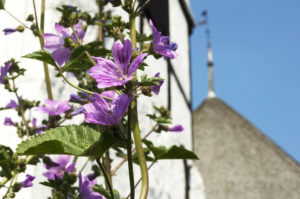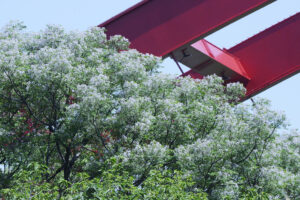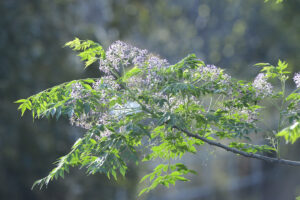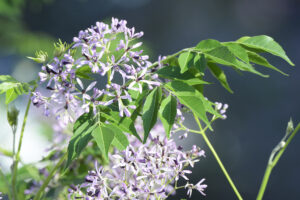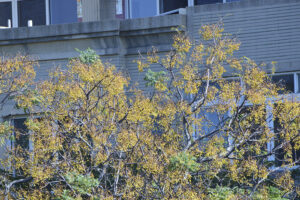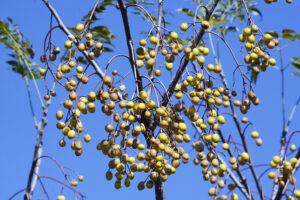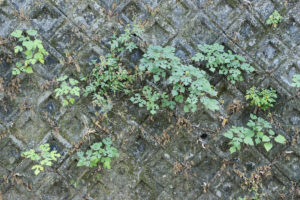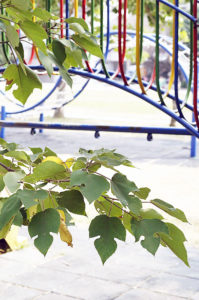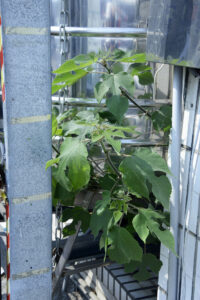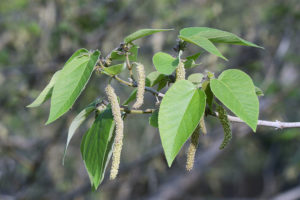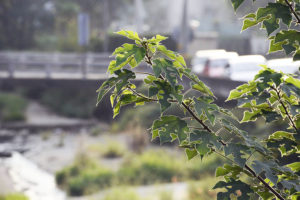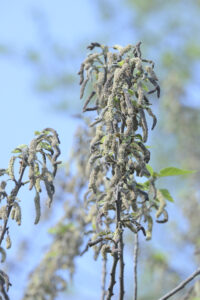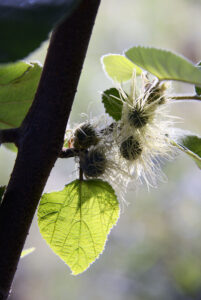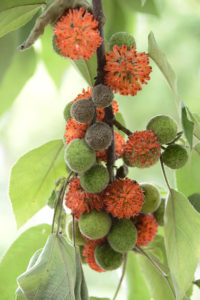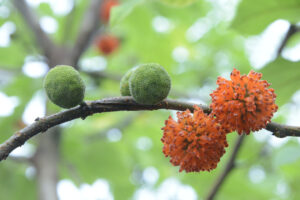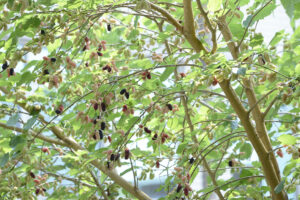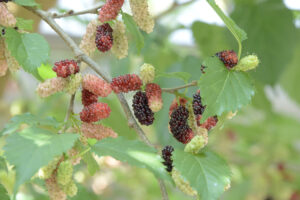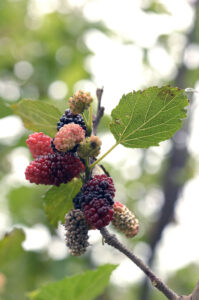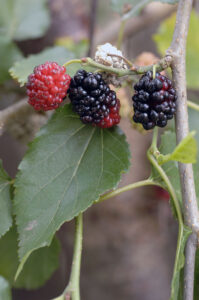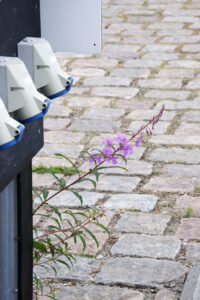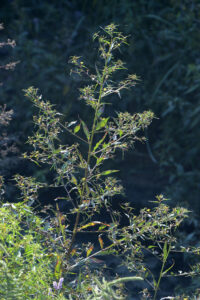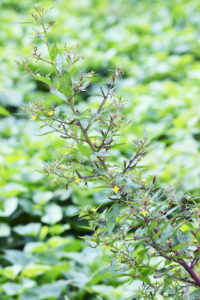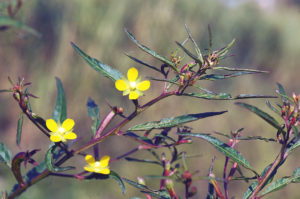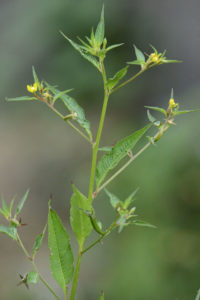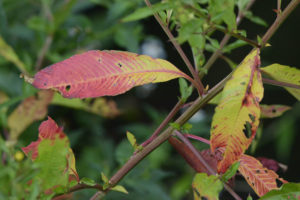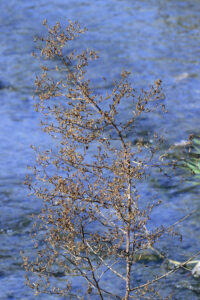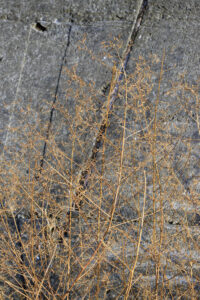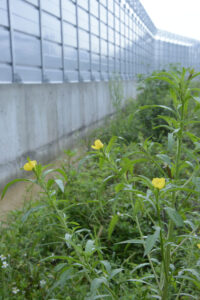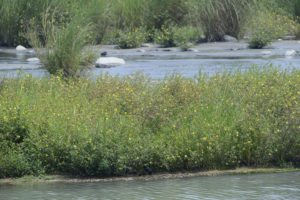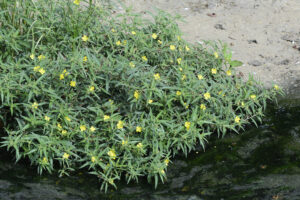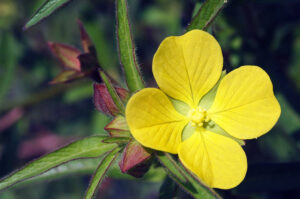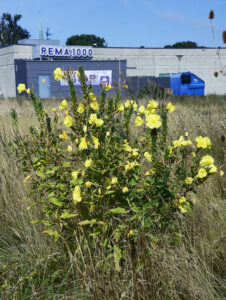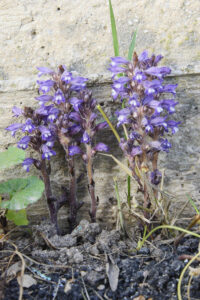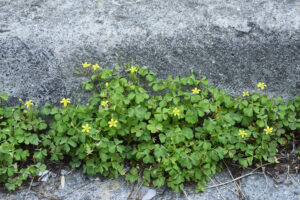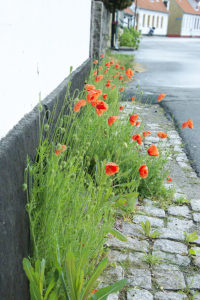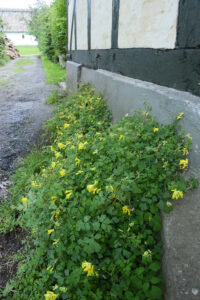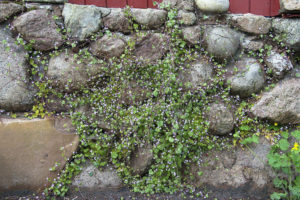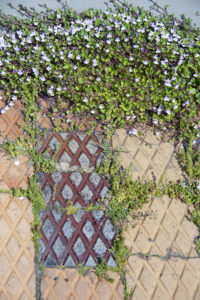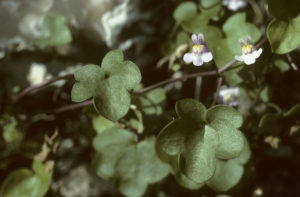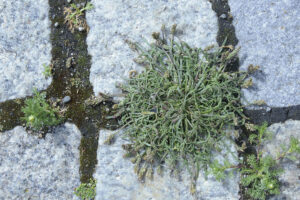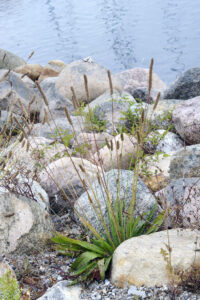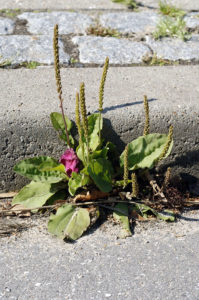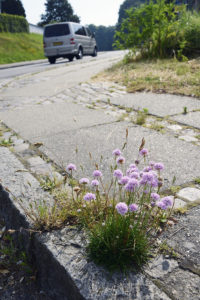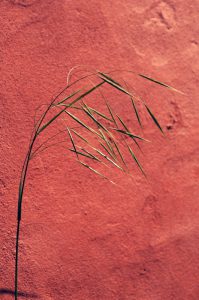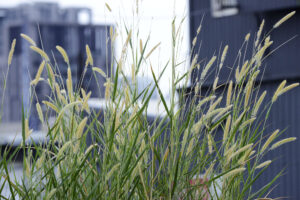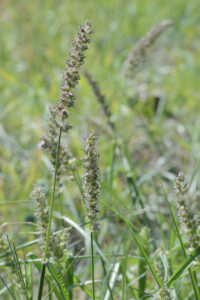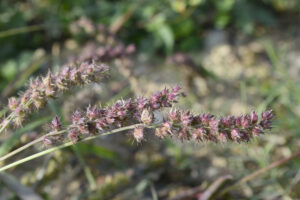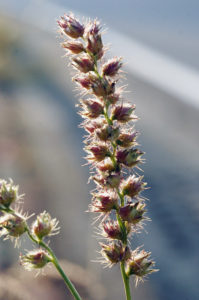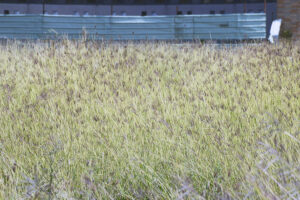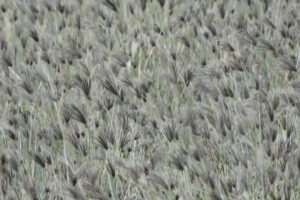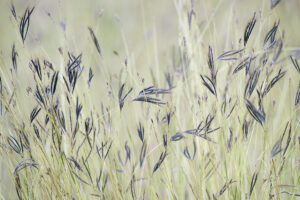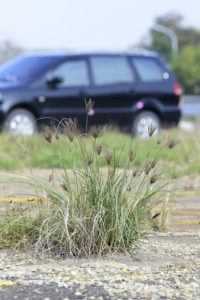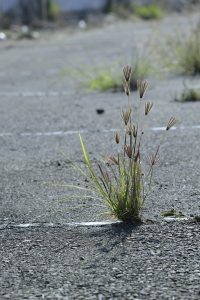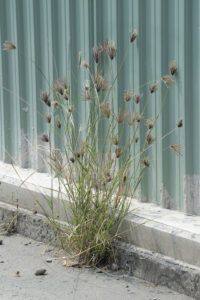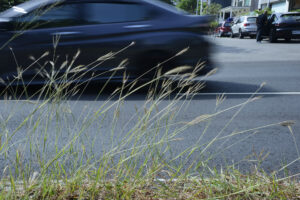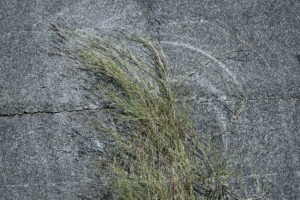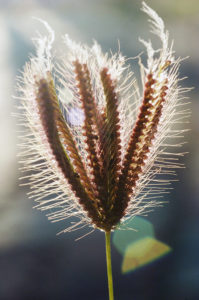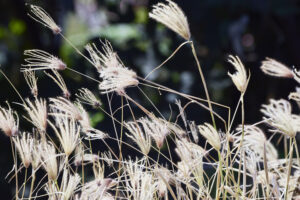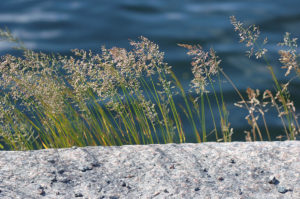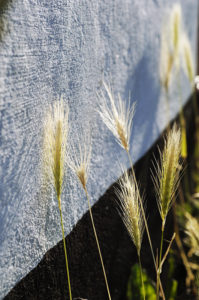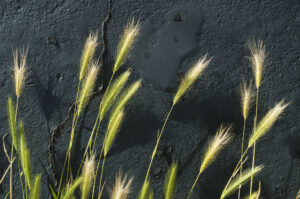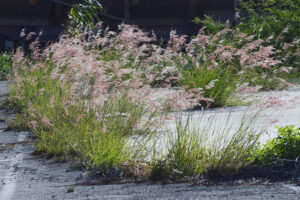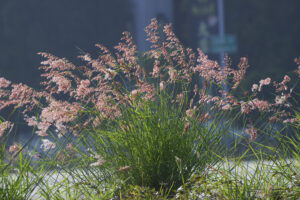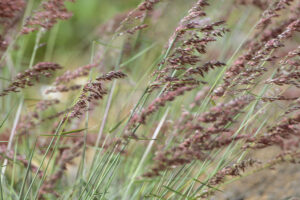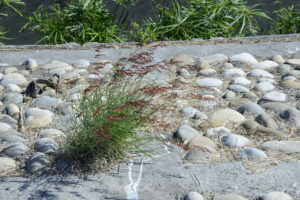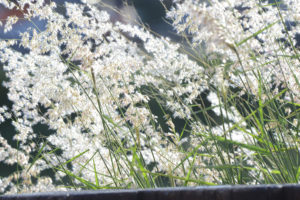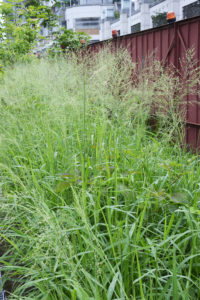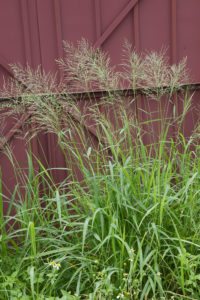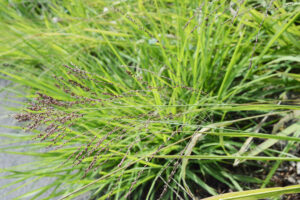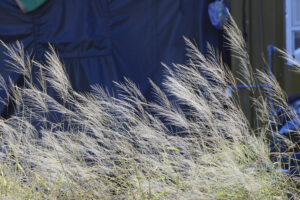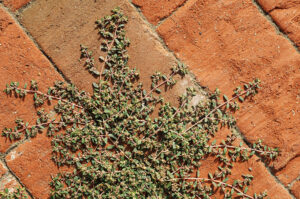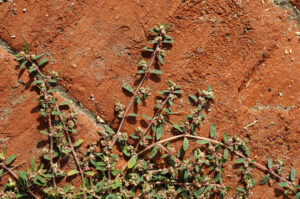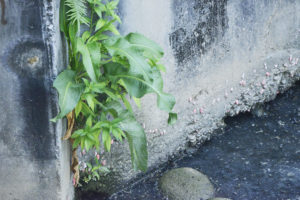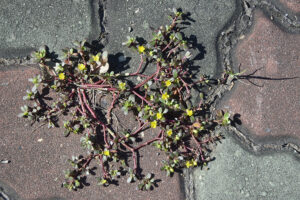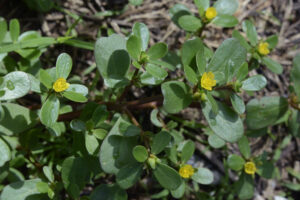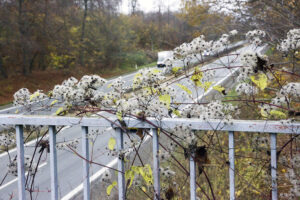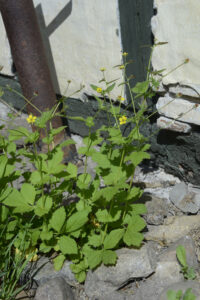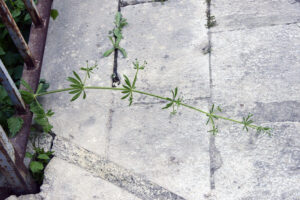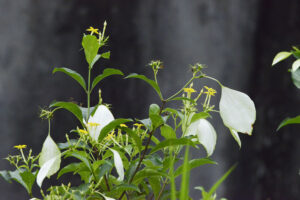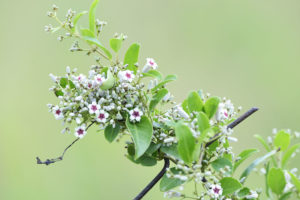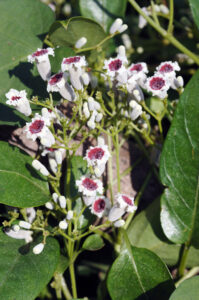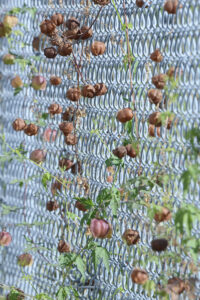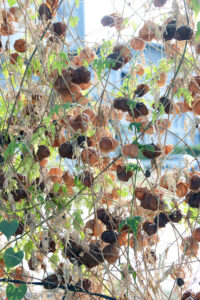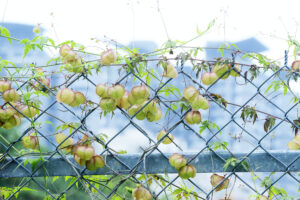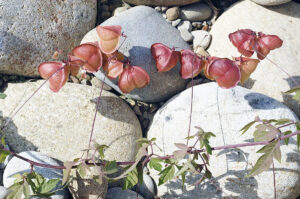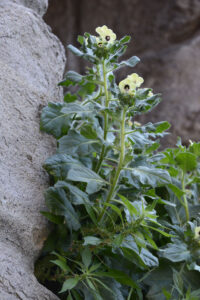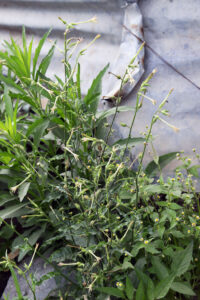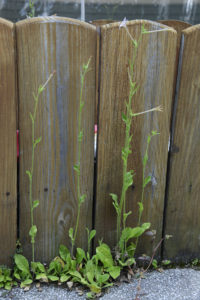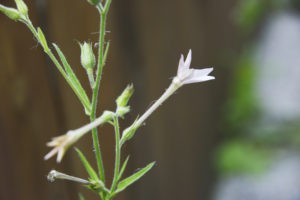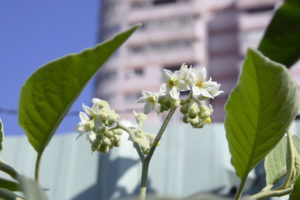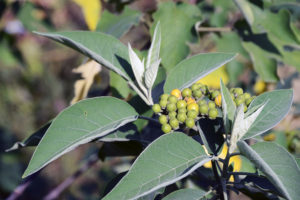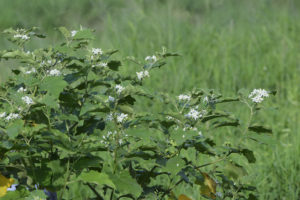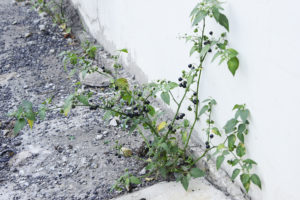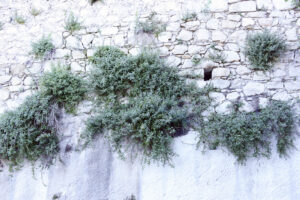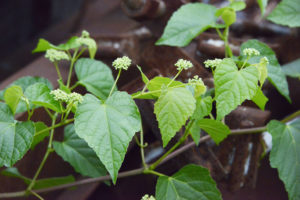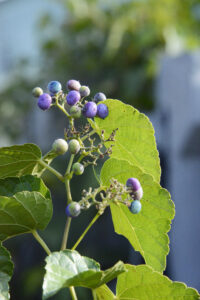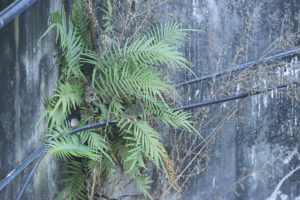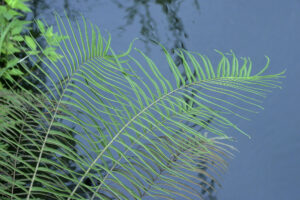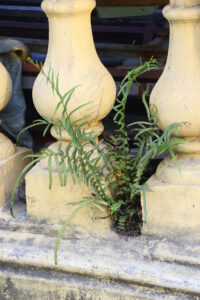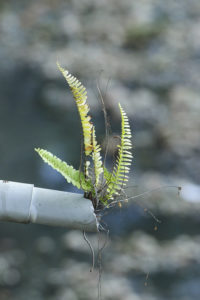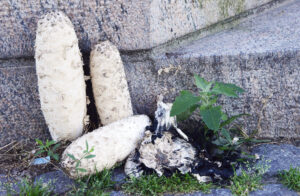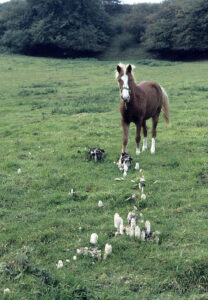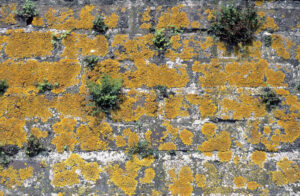Urban plant life
Railroad creeper (Ipomoea cairica, Convolvulaceae), creeping along barbwire, Taichung, Taiwan. (Photo copyright © by Kaj Halberg)
This spreading pellitory-of-the-wall (Parietaria judaica, Urticaceae) has sprouted in a hole on a house wall, Sultanahmet, Istanbul, Turkey. (Photo copyright © by Kaj Halberg)
Mexican primrose-willowherb (Ludwigia octovalvis, Onagraceae), growing along the Han River, Taichung, Taiwan. (Photo copyright © by Kaj Halberg)
This Asiatic dayflower (Commelina communis, Commelinaceae) has sprouted in a crack along a house wall, Taichung, Taiwan. (Photo copyright © by Kaj Halberg)
Withered peacock-plume grass (Chloris barbata, Poaceae) is often very decorative. These specimens are illuminated by the morning sun against a dark wall in the city of Taichung, Taiwan. The small plants are lantern tridax (Tridax procumbens, Asteraceae). (Photo copyright © by Kaj Halberg)
Traditionally, fungi and lichens were regarded as plants, and although they now belong to separate kingdoms, I include them on this page, as most people still regard them as plants. Together with ferns, they are presented at the bottom of the page.
Flowering plants
Amaranthaceae Amaranth family
Alternanthera sessilis Sessile joyweed
This creeping plant is native to South America, but has been spread to more than 30 countries in warmer regions around the world. It is a pioneer plant, growing in a wide range of habitats, including marshes, margins of streams, damp forests, and open disturbed areas, such as lawns and abandoned plots. It is also a weed in fields.
In many places, it has become a huge problem in water courses, as it may block the flow of water. It is listed as invasive in a number of countries, including Spain, United States, New Zealand, India, China, Taiwan, Namibia, and South Africa.
Sessile joyweed is very common in Taiwan, also in cities. These have sprouted in a crack in a pavement (top), and in an abandoned plot, Taichung. (Photos copyright © by Kaj Halberg)
Amaranthus viridis Slender amaranth
The native area of this species, also known as green amaranth, is unknown, and today it is distributed in all warmer areas of the world.
Leaves, as well as seeds, are eaten in many parts of the world. In Australia, this plant was also a source of food during the 19th Century. In 1889, botanist Joseph Maiden (1859-1925) wrote: “It is an excellent substitute for spinach, being far superior to much of the leaves of the white beet sold for spinach in Sydney. Next to spinach it seems to be most like boiled nettle leaves, which when young are used in England, and are excellent. This amarantus should be cooked like spinach, and as it becomes more widely known, it is sure to be popular, except amongst persons who may consider it beneath their dignity to have anything to do with so common a weed.” (Source: T. Low, 1985. Wild Herbs of Australia & New Zealand. Angus & Robertson)
In India, slender amaranth is utilized in traditional Ayurvedic medicine.
Amaranth species are also known as pigweeds. In his delightful book All about Weeds, Dover Publications (1974), American botanist Edwin Spencer (1881-1964) says about a close relative, A. retroflexus:“One of the most robust, devil-may-care weeds is the pigweed. ‘Careless weed’ is another of its common names, and it comes by this name honestly enough. In good rich soil, it cares for nothing. Wind, hail, fair weather and foul are all the same to the pigweed. Nor does it care what plants are its competitors. It can usually shoulder our any plant within reach, and it has a considerable reach. The name pigweed, however, has no reference to the piggish nature of the plant. It refers to the gustatory pleasure the weed affords pigs. Hogs will leave their corn to feast on pigweeds. In spite of its bristly appearance (it always reminds one of a boisterous young sailor with a week’s growth of sandy beard on his face and his cap on the side of his head), the leaves are tender, and if the smacking of lips and satisfied grunts mean the same thing to pigs that they do to Man, the weeds must be delicious.”
In Taiwan, slender amaranth is very common in cities, especially in fallow areas, and along roads and embankments. These pictures are all from Taichung. (Photos copyright © by Kaj Halberg)
Celosia argentea Silver cockscomb
Like the slender amaranth, the native area of this species, also called feathery amaranth, is unknown, and today it is found in most tropical and subtropical areas of the world. It is regarded as an invasive plant in numerous countries, including India, Japan, Ecuador (Galapagos Islands), Fiji, Taiwan, and the United States.
Silver cockscomb is described in depth on the page Plants: Plants in folklore and poetry.
Silver cockscomb is abundant in Taiwan, also in cities, where it often grows in abandoned plots, in this case in Taichung. Downy bur-marigold (Bidens pilosa, see below), likewise an invasive species, is also seen in the picture. (Photo copyright © by Kaj Halberg)
Silver cockscomb, growing in an abandoned parking lot, Taichung. (Photo copyright © by Kaj Halberg)
In this picture, silver cockscomb completely covers the bottom of a drainage canal in Taichung. (Photo copyright © by Kaj Halberg)
Anacardiaceae Sumac family
Rhus Sumac
Sumacs are a genus of c. 35 species, distributed in subtropical and temperate areas, especially around the Mediterranean, and in Asia, Australia, and North America. Other species, which were formerly placed in Rhus, have now been transferred to the genus Searsia, others to Toxicodendron, including poison ivy and poison oak, described on the page Autumn.
The word sumac is derived from Ancient Syriac summaq (‘red’), referring to the red fruits of the genus. They have an acrid taste and are used as a spice. In North America, the fruits of staghorn sumac (Rhus typhina) are soaked in cold water to make ‘pink lemonade’, a refreshing beverage, rich in vitamin C.
Rhus coriaria Elm-leaved sumac
This species, also known by other names, including tanner’s sumac and Sicilian sumac, is native from the entire Mediterranean region eastwards through the Caucasus and the Middle East to Kyrgyzstan and Afghanistan. It is also found on the Canary Islands and Madeira.
It is a shrub, growing to 5 m tall, leaves pinnately divided, with 7-8 pairs of ovate leaflets. The inflorescence is a terminal cluster of small white flowers, which later become brownish-red or greenish-yellow drupes, with a very acidic taste. They are dried and crushed to be used as a spice, which, together with other spices, form a mixture called za’atar.
Leaves and bark contain tannic acid and were formerly used in leather tanning, hence the specific name, derived from the Latin coriarium (‘leather’ or ‘tanning’). Various parts of the plant yield red, yellow, black, or brown dyes. Oil from the seeds are utilized to make candles.
Elm-leaved sumac is very common in Turkey. This one has taken root on the wall of an abandoned house in Sultanahmet, Istanbul. (Photo copyright © by Kaj Halberg)
Apiaceae Umbellifers
Aegopodium podagraria Goutweed
As far back as Ancient Rome, and throughout the Middle Ages, young leaves of goutweed were utilized as a vegetable, much as spinach is used. The generic name is from the Greek aix, genitive aigos (’goat’), and podion, diminutive of pous (’foot’), thus ‘little goat-foot’, referring to the shape of the leaves. According to the Doctrine of Signatures, Our Lord had shaped the plants, so that humans were able to discover what ailments they could be used for. Therefore, goutweed must be an effective remedy for gout. Medicinally, however, there is no basis for this assertion. It was also used as a laxative.
Goutweed is native to southern Europe and western Asia, but was introduced as a garden plant to northern Europe as early as the Middle Ages. It has also been accidentally introduced to North America, and almost everywhere it has become a most annoying garden weed.
In this picture, goutweed is growing out through a beech hedge alongside a pavement. – Jutland, Denmark. (Photo copyright © by Kaj Halberg)
Goutweed as a garden weed, Funen, Denmark. (Photo copyright © by Kaj Halberg)
Chaerophyllum temulum Rough chervil
This pioneer plant is found in a variety of habitats, including forest edges, waste places, and along walls and fences. It is distributed in the major part of Europe, eastwards to the Ural Mountains, the Caucasus, and Turkey, and also in north-western Africa.
The purplish, very hairy stem grows to about 1 m tall, leaves long-stalked, twice or thrice pinnate, pale or dark green, lobes ovate in outline, deeply toothed. Flowers are white. The plant is poisonous.
The generic name is derived from the Greek chairo (‘to please’) and phyllon (‘leaf’), thus ‘with pleasant foliage’. The specific name is from the Latin temulentum (‘drunken’), derived from temetum (‘an intoxicating drink’) and ulentus (‘full of’), alluding to the symptoms from poisoning by the plant being similar to those of alcoholic intoxication.
Rough chervil, growing at a house wall, Funen, Denmark. (Photo copyright © by Kaj Halberg)
Apocynaceae Dogbane family
Catharanthus roseus Madagascar periwinkle
This pretty plant is native to Madagascar, but is widely cultivated in warmer areas as an ornamental and sometimes escapes cultivation. It is also widely used as a medicinal plant, as it is a source of drugs, used in the treatment of cancer. Previously, it was included in the genus Vinca.
Madagascar periwinkle, growing in a crack in a concrete wall along a drainage canal, Taichung, Taiwan. (Photos copyright © by Kaj Halberg)
Asteraceae Composites
Achillea Yarrow, milfoil, sneezewort
A large genus of about 200 species, found mainly in Europe and temperate areas of Asia.
English herbalist John Gerard (c. 1545-1612) informs us that during the Trojan War the Greek hero Achilles used yarrow to stop bleeding on wounded soldiers. Hence, the name Achillea was applied to the genus by Swedish naturalist Carl Linnaeus (1707-1778). It was already mentioned as a medical herb in De simplicium medicamentorum facultatibus, written by Greek-Roman physician, surgeon, and philosopher Aelius Galenus (c. 129-210 A.D.), also known as Claudius Galenus or Galen of Pergamon.
Various plants, including yarrow, were found in a 50-60,000-year-old Neanderthal grave in Iraq, perhaps indicating that these plants were used medicinally. (Source: G.P. Shipley & K. Kindscher 2016. Evidence for the Paleoethnobotany of the Neanderthal: A Review of the Literature. hindawi.com/journals/scientifica/2016/8927654)
The name yarrow is a corruption of gearwe, an ancient Anglo-Saxon name for common yarrow (below).
Achillea millefolium Common yarrow
A widespread plant, to 90 cm tall, found in temperate areas of Eurasia and North America, mainly growing in disturbed areas, along roads and ditches, and in fallow fields. It was introduced as a fodder plant to Australia and New Zealand, where it has become naturalized in several areas. In montane areas of south-eastern Australia, it is regarded as an invasive weed.
The greyish-green leaves are very finely dissected, aromatic, to 10 cm long. Flowerheads are numerous, sometimes up to 50, borne in a flat or slightly domed cluster to 30 cm across. Ray florets are white, much larger than the tiny yellowish or cream-coloured disc florets. The entire flowerhead is only to 8 mm across.
The specific name is derived from the many fine segments of the leaves, hence its popular names milfoil and thousand-weed. In parts of south-western United States, it is called plumajillo (Spanish for ‘little feather’), likewise alluding to the leaves.
The role of this species in folklore and traditional medicine is described on the page Plants: Plants in folklore and poetry.
Dwarf form of common yarrow, growing among cobbled stones, together with buck’s-horn plantain (Plantago coronopus), Nyborg, Denmark. (Photo copyright © by Kaj Halberg)
Ageratum conyzoides Goat-weed
This plant, and the rather similar Mexican blueweed (A. houstonianum), are both native to Central and South America, but have become naturalized worldwide in tropical and subtropical areas. Both are regarded as invasive weeds in numerous countries around the world, in Africa, Southeast Asia, China, Japan, Australia, New Zealand, and the United States.
The medical usage of these plants is described on the page Plants: Plants in folklore and poetry.
Large growth of goat-weed along a fence, Hanoi, Vietnam. (Photo copyright © by Kaj Halberg)
Artemisia Mugwort
A huge, worldwide genus, counting between 200 and 400 species. Besides mugwort, common names of these plants include wormwood and sagebrush. The genus is presented in depth on the page Plants: Plants in folklore and poetry. A picture, depicting lance-leaved mugwort (A. lancea), may be seen under Ixeridium laevigatum (below).
Artemisia vulgaris Common mugwort
This plant is native to the major part of Temperate Europe and Asia, and also to North Africa and Alaska. In other areas of North America, it has become naturalized. Originally, it was restricted to dry grasslands and sandy beaches, but when farming was introduced, it readily spread to fields, and today it is regarded as a noxious weed.
In China, this species is sometimes used as a substitute for A. argyii to make moxa, which is much utilized as a healer in traditional Chinese medicine.
Common mugwort, growing near a canal in Copenhagen, Denmark. (Photo copyright © by Kaj Halberg)
Bidens pilosa Downy bur-marigold
This pan-tropical and -subtropical weed, of unknown origin, has become a pest in numerous places, expelling native species. One isolated plant can produce over 30,000 hooked seeds, which are readily spread by sticking to animals’ furs, socks, trousers, etc.
This method of seed dispersal has given it names like beggar-ticks, stickseed, farmer’s friend (ironic!), needle grass, Spanish needles, stick-tight, cobbler’s pegs, Devil’s needles, and Devil’s pitchfork. Other names include blackjack and hairy bidens.
A South African website, farmersweekly.co.za/animals/horses/beware-those-blackjacks, says: “The common blackjack is not only an irritant to horses, (but) can cause them injury. (…) There can be few of us who have not spent ages picking them off our clothes after walking through the veld to catch horses in the early winter. Blackjacks that become entangled in the forelock of a horse can be a great irritant, and the animal will toss its head, if you try to remove them. The spines can injure the eyes, so it’s better to clip the forelocks short. Blackjacks can also get caught up in the long hair behind the fetlocks and pasterns, causing chronic irritation and lameness.”
Downy bur-marigold is reported to be a weed of 31 crops in more than 40 countries, Latin America and eastern Africa having the worst infestations. (Source: cabi.org/isc/datasheet/9148)
However, this species is not only a troublesome weed, but also has medicinal properties. In traditional Chinese medicine, it is used for a large number of ailments, including influenza, colds, fever, sore throat, appendicitis, hepatitis, malaria, and haemorrhoids. Due to its high content of fiber, it is beneficial to the cardiovascular system, and it has been used with success in treatment of diabetes.
In Taiwan, downy bur-marigold is extremely common, often covering huge areas, including in cities, where it pops up everywhere, as is obvious from the pictures below, all from Taichung.
In this picture, downy bur-marigold is growing at the edge of a parking lot. (Photo copyright © by Kaj Halberg)
These have sprouted in a drainage canal. (Photo copyright © by Kaj Halberg)
This one is growing up a fence. (Photo copyright © by Kaj Halberg)
Here, a specimen has taken root between two road dividers. (Photo copyright © by Kaj Halberg)
A form of downy bur-marigold with pinkish petals. (Photo copyright © by Kaj Halberg)
These pictures show the characteristic fruits of downy bur-marigold. The hooked seeds will cling to almost anything. (Photos copyright © by Kaj Halberg)
Calyptocarpus
This genus contains about 4 species, distributed in the southern United States and Latin America.
The generic name is derived from Ancient Greek kalypto (‘covered’ or ‘hidden’) and karpos (‘fruit’).
Calyptocarpus vialis
This creeping plant is native from Mexico eastwards to Venezuela, and is also found in southern Louisiana and Texas, and in the Caribbean. It has become naturalized in many other countries, including India, Australia, China, and Taiwan. It grows in lawns and other disturbed places, such as roadsides and trails.
In Taiwan, Calyptocarpus vialis is a common city plant, often growing in cracks along sidewalks. These were photographed in Taichung. (Photos copyright © by Kaj Halberg)
A large growth of Calyptocarpus vialis, climbing up a long-term parked bicycle, Taichung. (Photo copyright © by Kaj Halberg)
Crassocephalum crepidioides Red-flower rag-leaf
This plant, which may sometimes reach a height of 1.7 m, is native to Africa, but has become naturalized in most warmer areas around the world, growing in open areas, fallow fields, along trails, and in cities.
The numerous flowerheads, to 1 cm across, are in terminal clusters. Ray florets are missing, disc florets have a unique reddish-brown colour, more rarely orange or yellow. Leaves are mostly elliptic, to 12 cm long and 5 cm wide, hairless, margin irregularly toothed, sometimes pinnately lobed at the base.
It is used medicinally for indigestion and diarrhoea, and to invigorate the spleen. In Nepal, juice of the plant is applied to wounds, and young leaves and stems are eaten as a vegetable.
The generic name is from the Latin crassus (‘thick’, ‘stout’), and the Greek kephale (‘head’), alluding to the flowerheads, which are grouped in relatively large, robust inflorescences. The specific name means ‘resembling Crepis‘ (see below).
Other pictures, depicting Crassocephalum, are shown on the page Plants: Himalayan flora 1.
Red-flower rag-leaf, growing next to a house wall, Kathmandu, Nepal. (Photo copyright © by Kaj Halberg)
Crepis Hawk’s-beard
This huge genus, comprising about 200 species, is distributed in the Northern Hemisphere and Africa, with the core area around the Mediterranean. The generic name is derived from the Greek krepis (‘slipper’ or ‘sandal’), according to some authorities referring to the shape of the fruit.
Crepis capillaris Smooth hawk’s-beard
A widespread plant, native to the major part of Europe, eastwards to the Ural Mountains and the Caucasus, but widely introduced elsewhere, including North America, the northern Andes, South Africa, and Australia. It grows to 60 cm tall, with numerous pale yellow flowerheads to 1.5 cm across.
Smooth hawk’s-beard, growing in a crack in a house wall, Jutland, Denmark. (Photo copyright © by Kaj Halberg)
Cyanthillium cinereum Little ironweed
This plant, previously known as Vernonia cinerea, is native to tropical areas of Africa and Arabia, and from the Indian Subcontinent eastwards to Japan, and thence southwards to eastern Australia and many islands in the Pacific. It has become naturalized elsewhere, including Latin America, the Caribbean, and southern United States.
It may grow to 1.2 m tall, with a many-branched inflorescence, containing numerous flowerheads with pinkish or purplish florets, all disc florets.
It is used medicinally for colds, and as a means to stop smoking.
It resembles Emilia sonchifolia (below), but that species is smaller, with a much smaller inflorescence, often with only a few flowerheads.
Little ironweed, growing in open areas, Taichung, Taiwan. (Photos copyright © by Kaj Halberg)
Emilia Tasselflower
This genus contains c. 115 species, distributed mainly in tropical and subtropical areas of Africa and Asia.
Emilia sonchifolia Lilac tasselflower
Lilac tasselflower may grow to 70 cm tall, but is often much smaller. It is probably native to South and East Asia, but is today widespread in tropical and subtropical regions around the world.
This plant is also known as Cupid’s shaving brush, named for Cupid, the Roman god of desire, eroticism, and affection, alluding to the tiny flowerheads, which resemble miniature shaving brushes. The specific name is derived from the Greek sonchos, the ancient name for sow-thistles, and the Latin folium (‘leaf’). The leaves of this plant often resemble those of Sonchus oleraceus (see below). However, they vary tremendously, from lyrate and pinnatifid to almost entire.
Lilac tasselflower, photographed in Taiwan, where this species is very common, also in cities, in this case Taichung. (Photos copyright © by Kaj Halberg)
Erigeron annuus Annual fleabane
This species is native to North America, but has become naturalized many other places, especially Europe and Asia. It is a pioneer plant, often colonizing disturbed areas, including fallow fields, waste places, roadsides and along railways.
Annual fleabane, Nyborg harbour, Denmark. (Photo copyright © by Kaj Halberg)
Erigeron canadensis Horsetail fleabane
This plant is also known as Canadian fleabane, and some authorities regard it as belonging to the genus Conyza. It is native to North America and parts of Central America, but has been accidentally introduced to large parts of the world. In many places it has become a serious pest, especially in Europe and Australia, but also in its native North America. It prefers to grow in undisturbed areas and is particularly troublesome in newly established plantations, where it is able to resist herbicides, growing to 3 m tall, thus depriving planted species of nutrients and sunlight.
This plant contains an oil with a turpentine-like smell, which, supposedly, should deter fleas, hence its common name. Another popular name is bloodstanch, given by herbalists, who claim that an extract from leaves and flowers arrests haemorrhages from the lungs and alimentary tract.
Horsetail fleabane, growing along a street in the city of Taichung, Taiwan. (Photo copyright © by Kaj Halberg)
This horsetail fleabane, observed in a graveyard in Taichung, is almost 2 m tall. (Photo copyright © by Kaj Halberg)
Galinsoga parviflora Hairy galinsoga, gallant soldiers
This herb, which is native to South America, was brought from Peru to Kew Botanical Gardens, London, in 1796. Later it escaped, quickly forming wild populations, and today it has been spread to most parts of the world, growing in waste areas, fields, gardens, along trails, and in cities.
The stem is branched, sometimes growing to 75 cm tall, but usually much lower. The leaves are opposite, stalked or sessile, broadly lanceolate, to 11 cm long and 7 cm wide, margin weakly toothed. The flowerheads are tiny, to 5 mm across. The ray florets, usually 5, but sometimes up to 8, are usually white, sometimes pink, 3-lobed, to 1.8 mm long and 1.5 mm wide, disc florets yellow.
Leaves, stem and flowers are edible, and the subtle flavour, reminiscent of artichoke, develops after being cooked. It is also dried and ground into powder for usage in soups. In Nepal, juice of the plant is applied to wounds.
The genus was named in honour of Ignacio Mariano Martinez de Galinsoga (1756-1797), director of the Royal Botanical Garden in Madrid, and physician to the Spanish Queen consort Maria Luisa de Parma. In Britain, the generic name was corrupted to gallant soldiers.
Hairy galinsoga, growing next to house walls, Kathmandu, Nepal. (Photos copyright © by Kaj Halberg)
Gnaphalium uliginosum Marsh cudweed
Marsh cudweed, sometimes called brown cudweed, is native to Europe and northern Asia, and it has been accidentally introduced in North America, where it is found in the northern half of the continent.
The natural habitat of this plant is humid areas, such as water-logged fields, but it is also able to thrive in drier areas, including city streets. In Russia, it has been used in folk medicine to treat high blood pressure.
Marsh cudweed (the greyish-green plants), growing among cobble stones on a sidewalk, Jutland, Denmark, together with annual meadow-grass (Poa annua) and greater plantain (Plantago major, see Plantaginaceae below). (Photo copyright © by Kaj Halberg)
Ixeridium laevigatum
The basal leaves of this species are very variable, mostly with rather large lobes, but sometimes being almost entire, whereas the stem leaves are mostly linear and rather narrow. The yellow flowerheads are up to 1 cm across. It is distributed in Japan, China, Taiwan, Indochina, the Philippines, and Indonesia, growing in forests, shrubberies, and grasslands, up to an elevation of about 600 m.
In Taiwan, Ixeridium laevigatum is often encountered in urban areas. In this picture, it grows beneath a tree on a sidewalk in Taichung, together with lance-leaved mugwort (Artemisia lancea). (Photo copyright © by Kaj Halberg)
Ixeris chinensis Rabbit milkweed
This plant is easily identified by its mostly linear, rather narrow leaves and pale yellow flowerheads, to 2 cm across. It is distributed from south-eastern Siberia southwards through China, Korea, Japan, and Taiwan to Southeast Asia, growing commonly in a variety of habitats, including grasslands, forest margins, shrubberies, riverbanks, field margins, wastelands, and roadsides, up to an elevation of about 4,700 m.
As these pictures show, rabbit milkweed may sprout in small cracks in roads and sidewalks, and along house walls. – Taichung, Taiwan. (Photos copyright © by Kaj Halberg)
Matricaria discoidea Disc mayweed
Disc mayweed is native to North America and north-eastern Asia, southwards to Hokkaido, Japan. Today, however, it has been accidentally introduced to most other areas of the world, where it is a common weed, growing in open areas. Other names of the plant include wild chamomile and pineapple weed, due to its chamomile- or pineapple-like smell, when crushed.
Disc mayweed, growing in a crack along a gutter, Jutland, Denmark. The white object is a bird feather. (Photo copyright © by Kaj Halberg)
This large specimen of disc mayweed has sprouted between cobble stones, Nyborg, Denmark. (Photo copyright © by Kaj Halberg)
Notobasis syriaca Syrian thistle
A very spiny plant, growing to about 1 m tall, with very variable leaves, always with white veins. The flowerheads are purplish-red, to 3 cm across, surrounded by spiny bracts. It is native from the Canary Islands and Madeira across the Mediterranean region eastwards to the Caucasus and Iran.
This Syrian thistle has sprouted in a crack on a sidewalk, Cefalú, Sicily. (Photo copyright © by Kaj Halberg)
Parthenium
Members of this American genus, which contains about 12 species, are commonly known as feverfew, not to be confused with an Old World plant with the same name, Tanacetum parthenium, which is presented on the page Plants: Plants in folklore and poetry. The generic name is a Latinized version of the Greek parthenos (‘virgin’), or maybe parthenion, which was the name of an unknown plant in Ancient Greece.
Parthenium hysterophorus Santa Maria feverfew
This plant is native to large parts of the Americas, from southern United States southwards to Mexico, the Caribbean, and northern South America. However, it has been spread to virtually all warmer areas of the world and has become naturalized in many places, ranging from fields and grasslands to roadsides, fallow plots, and along railroads, usually below 1,500 m altitude, but occasionally observed up to 1,800 m. It is regarded as an invasive in Kenya, Uganda, and Tanzania.
The stem grows to 1.2 m tall, leaves ovate or elliptic in outline, to 18 cm long and 9 cm wide, pinnately divided, ultimate segments lanceolate to linear, to 5 cm long and 1.5 cm wide. Flowerheads to 3 mm across, in open panicles, florets snow-white, ray florets tiny or missing. This plant somewhat resembles certain species of Artemisia (above), but its flowerheads are more flattened, and pure white.
In America, it has a number of popular names, including bitterweed, carrot grass, congress grass, false chamomile, false ragweed, and white-top.
The specific name is from the Greek hystera (‘womb’) and phoros (‘bearing’), maybe alluding to the shape of the flowerheads.
This plant should be handled with caution, as it may cause dermatitis and respiratory malfunction in humans, and, if eaten by livestock, it may cause udder disease.
An abundance of Santa Maria feverfew, growing in an empty lot, Kathmandu, Nepal. (Photos copyright © by Kaj Halberg)
In these pictures, Santa Maria feverfew grows along busy streets in Taichung, Taiwan. (Photos copyright © by Kaj Halberg)
The leaves of Santa Maria feverfew resemble those of certain species of Artemisia (above). – Taichung. (Photo copyright © by Kaj Halberg)
Senecio viscosus Sticky groundsel
As its name implies, this plant, also called sticky ragwort or stinking groundsel, is very sticky. The following quotation gives a vivid impression of its stickiness: “Sticky groundsel has characteristic glandular hairs, which secrete a substance that is as sticky as fly paper, and by the end of summer it is quite a mess with all the dust, sand, small insects, hairs, feathers, downy seeds, its own cypselas [seeds], candy wrappers, and who knows what else that have stuck to it.” (Source: luontoportti.com/suomi/en/kukkakasvit/sticky-groundsel)
Originally, sticky groundsel was a native of southern and central Europe and western Asia. Since the 1800s, it has spread considerably, mainly along railroads, and has become naturalized in northern Europe, Canada, United States, and elsewhere.
Sticky groundsel, Nyborg harbour, Denmark. (Photo copyright © by Kaj Halberg)
Sonchus Sow-thistle
This genus, comprising about 100 species, is widely distributed in the entire Old World, and has also become widely naturalized in the New World.
The generic name is a Latinized form of the Greek sonkhos, the ancient name for sow-thistles.
Sonchus asper Prickly sow-thistle
A stout plant, which may grow to 1.2 m tall, but is often much lower. The stem is often reddish. Leaves are extremely variable, obovate, spatulate, or elliptic, to 13 cm long and 5 cm wide, entire or irregularly divided, base eared and strongly recurved, clasping the stem, margin heavily spiny. Flowerheads relatively few, to 2.5 cm across, in an open terminal cluster. Ray florets numerous, bright yellow, disc florets absent.
This species presumably originates from the Mediterranean region, but has become naturalized in most parts of the world. In Nepal, a paste of the plant is applied to wounds and boils. It is also collected for fodder, and tender parts are cooked as a vegetable.
In the picture below, prickly sow-thistle is growing in front of a tombstone in the Assistens Cemetery, Copenhagen, placed on the grave of Thorkild Weiss Madsen, who was active in the alternative-lifestyle area of Christiania (described on the page Culture: Folk art around the world.) The stone is shaped as a runic stone with a carved dragon and the following text (approximate translation): ”This stone was erected in memory of Thorkild by his wife and daughter. The good boy Eric the Red carved the runes.”
(Photo copyright © by Kaj Halberg)
Sonchus oleraceus Common sow-thistle
This species is native to Europe and western Asia, but has been spread to most other areas of the world. It is regarded as an invasive plant in many countries, including Australia, where it is a serious problem in crops. It is easily identified by its slightly prickly, deeply divided leaves.
The specific name is derived from the Latin oleris, meaning ‘edible’. Young leaves can be eaten as salad or cooked like spinach. The common name refers to the fact that pigs like to eat this plant, and to the leaves, which resemble young thistle leaves.
Common sow-thistle is very common in Taiwan. This picture shows a large growth in the city of Taichung. The white flowers are downy bur-marigold (Bidens pilosa, see above). (Photo copyright © by Kaj Halberg)
This one has taken root along a house wall in the town of Rønne, Bornholm, Denmark. (Photo copyright © by Kaj Halberg)
Common sow-thistle, peeping out through a garden fence, Terrasini, near Palermo, Sicily. (Photo copyright © by Kaj Halberg)
This common sow-thistle has sprouted in a crack along a parking lot, Taichung, Taiwan. Tree sparrows (Passer montanus) are eating its seeds. (Photo copyright © by Kaj Halberg)
Hybrids between prickly and common sow-thistle, Taichung. The spines on the leaves indicate prickly sow-thistle, whereas the deeply divided leaves, and the pointed ‘ears’ at the nodes, indicate common sow-thistle. The composite with white ray florets is downy bur-marigold (Bidens pilosa), described above. (Photos copyright © by Kaj Halberg)
Sonchus tenerrimus Slender sow-thistle
This plant is native to southern Europe, northern Africa, and western Asia, but has been spread to many cities around the world, the seeds presumably arriving with ship cargo. It resembles the common sow-thistle (above), but may at once be identified by its deeply divided leaves, with very narrow lobes.
Slender sow-thistle, growing at a house wall, Castellamare del Golfo, Sicily. (Photo copyright © by Kaj Halberg)
Sonchus wightianus
This plant resembles the previous species, but may at once be identified by the leaves, which are usually undivided, sometimes lobed, the margin with few or many sharp teeth. It grows to 1.5 m tall, but is often much lower. The flowerheads are to 1.5 cm across.
It is distributed from Afghanistan eastwards to China, thence southwards to Sri Lanka and Java, growing in open areas, waste lands, fallow fields, and urban areas, from the lowlands to elevations around 2,300 m.
The specific name was given in honour of Scottish surgeon and botanist Robert Wight (1796-1872), who spent most of his life in southern India, where he was the leading botanical taxonomist, describing 110 new genera and 1,267 new species. He published a series of illustrated works in Madras, including the six-volume Icones Plantarum Indiae Orientalis (1838–53), the Illustrations of Indian Botany (1838–50), and Spicilegium Neilgherrense (1845–51).
Sonchus wightianus, Sundarijal, Kathmandu Valley, Nepal. Galinsoga parviflora is also seen. (Photo copyright © by Kaj Halberg)
Sonchus wightianus, growing up a fence, Hanoi, Vietnam. (Photo copyright © by Kaj Halberg)
Symphyotrichum subulatum Eastern saltmarsh aster
This species, formerly known as Aster subulatus, is native to eastern North America, Texas, northern Mexico, and some islands in the Caribbean, but has become naturalized in many other warmer areas around the world.
The stem grows to 1.5 m tall, leaves dark green, narrowly linear, with entire margin. The inflorescence is a raceme with numerous small flowerheads, to 1 cm across, disc florets yellow, ray florets varying in colour from white to lavender. It grows in a wide variety of habitats, including salt marshes, lawns, empty plots, and along ponds, fields, and roads.
Eastern saltmarsh aster, Mandzou, southern Taiwan. (Photos copyright © by Kaj Halberg)
In this picture, eastern saltmarsh aster grows near a house wall in Taichung, Taiwan. (Photo copyright © by Kaj Halberg)
Tanacetum partheniifolium
This plant is native from Turkey eastwards to the Caucasus and Central Asia. The well-known garden plant feverfew (T. parthenium) possibly evolved through selection from this species. Its leaves are dark green or grey-green, with a pointed outline, whereas they are pale green and has a rounded outline in feverfew. Otherwise they are very similar.
The medicinal properties of feverfew are discussed on the page Plants: Plants in folklore and poetry.
Tanacetum partheniifolium is very common in Istanbul, even on buildings. (Photos copyright © by Kaj Halberg)
Taraxacum Dandelion
Apomictic (asexual) reproduction is very common in dandelion, resulting in an abundance of species and micro-species, more than 2,500 worldwide, mainly in subarctic and temperate zones of the Northern Hemisphere, a few in temperate regions of the Southern Hemisphere.
These plants are characterized by stem and leaves having a milky sap, and most species have lobed or serrated leaves. The single flowerhead, 2-6 cm across, is borne on a leafless, hollow stem, 10-20 cm tall, sometimes more. Florets are yellow, very numerous, densely crowded.
Dandelion was first mentioned as a medicinal herb by Arabian physicians in the 10th or 11th Century, who called it a sort of wild endive (Cichorium), under the name of tharakhchakon, which was corrupted to Taraxacum. In French, these plants were named dent de lion (‘lion’s tooth’), alluding to the often strongly serrated leaves. This name was adopted by the English, corrupted to dandelion.
The role of dandelion in folklore and traditional medicine is described on the page Plants: Plants in folklore and poetry.
Taraxacum officinale Common dandelion
This species is a native of the Northern Hemisphere, but has become naturalized in countless countries around the globe. It is ubiquitous in Europe, including in cities, where it readily grows in cracks and between flagstones.
Large growth of dandelion along a highway, Århus, Denmark. (Photo copyright © by Kaj Halberg)
In these pictures from Copenhagen, Denmark, dandelion grows among wood chips, strewn along a street (top), and outside the Carlsberg Breweries. (Photo copyright © by Kaj Halberg)
Tridax procumbens Lantern tridax
This small composite, which is native to Tropical America, has been introduced to most warmer areas of the world and has become naturalized in many places.
Lantern tridax is extremely common in Taiwanese cities, sprouting in cracks everywhere and often covering large areas. The pictures below are all from Taichung.
(Photos copyright © by Kaj Halberg)
Here, lantern tridax has sprouted in a crack in a concrete wall along the Han River. (Photo copyright © by Kaj Halberg)
Lantern tridax, growing near a metal sheet wall. The tall plant is a species of aster, Symphyotrichum subulatum (see above). (Photo copyright © by Kaj Halberg)
In this picture, lantern tridax has sprouted on a grass-clad grave. The plant with white flowerheads is downy bur-marigold (Bidens pilosa, see above). (Photo copyright © by Kaj Halberg)
Youngia japonica Oriental false hawksbeard
The stem of this plant, which is also known as Japanese hawksbeard, is usually tall, erect, and unbranched, with numerous small, yellow, terminal flowerheads, to 8 mm across. The basal leaves are quite broad, more or less hairy, and mostly deeply lobed or pinnately divided. It is native to Asia and Australia, but has spread to most warmer areas of the world. It is common in disturbed areas, wastelands, roadsides, abandoned pastures, lawns, cultivated fields, and forest margins.
Oriental false hawksbeard thrives under tree cover. This picture shows a large growth in a green spot between streets, Taichung, Taiwan. (Photo copyright © by Kaj Halberg)
In cities, oriental false hawksbeard is mostly found in parks. These pictures are from Tunghai University Park, Taichung. (Photos copyright © by Kaj Halberg)
Brassicaceae Mustard family
Capsella bursa-pastoris Shepherd’s purse
This species, which is native to western Asia and Europe, has become naturalized almost worldwide in temperate and subtropical areas. It is also called shepherd’s bag, shepherd’s scrip, shepherd’s sprout, lady’s purse, witches’ pouches, rattle pouches, case-weed, pick-pocket, pick-purse, blindweed, pepper-and-salt, poor man’s pharmacettie, and mother’s heart. Most of these names, as well as the specific name, refer to the shape of the fruits, or siliques, which are flat and triangular, resembling an old-fashioned bag or purse.
An Irish name of the species, clappedepouch, was likewise given in allusion to the long-stalked siliques, which resemble a beggar’s cup. In the old days, lepers would ring a bell, or a clapper, receiving their alms in a cup at the end of a long pole, to avoid people being infected.
The medical usage of shepherd’s purse is described on the page Plants: Plants in folklore and poetry.
Shepherd’s purse, growing in a crack along a sidewalk in Denmark. (Photo copyright © by Kaj Halberg)
Large growth of shepherd’s purse in Tunghai University Park, Taichung, Taiwan. (Photo copyright © by Kaj Halberg)
In this picture, shepherd’s purse grows in a gutter together with annual meadow-grass (Poa annua), Mineo, Sicily. (Photo copyright © by Kaj Halberg)
Lepidium virginicum Virginian peppercress
The common names of this species, which also includes least pepperwort, stem from the fact that all parts of this plant have a peppery taste. It is a native of North America, from southern Canada southwards to Mexico, but has been widely introduced to many other countries. It grows in open, drier places, and has readily adapted to a life in cities.
This Virginian peppercress has sprouted in a crack in an abandoned parking lot in the city of Taichung, Taiwan. (Photo copyright © by Kaj Halberg)
Sisymbrium officinale Hedge mustard
An erect plant, to 80 cm tall, branches often growing at a right angle from the stem. The small, yellow flowers develop into long fruits, sitting close to and parallel to the stem.
This species grows in wasteland and fields, and along roads, also in towns. It is native to Europe and North Africa, but has been spread to most cooler areas of the globe, sometimes cultivated for its edible leaves and seeds.
It was formerly widely used in traditional medicine, reflected in the specific name, which means ‘sold in offices’, i.e. pharmacies. In Ancient Greece, it was believed that the plant was an antidote to all poisons. In his Complete Herbal, English herbalist Nicholas Culpeper (1616-1654) writes: ”It is good for all diseases of the chest and lungs, hoarseness of voice (…) The juice, made into a syrup with honey or sugar, is no less effectual for all other coughs, wheezing and shortness of breath. The seed is held to be a special remedy against poison and venom.”
“It is named by the French the ‘Singer’s Plant,’ it having been considered up to the time of Louis XIV an infallible remedy for loss of voice.” (Source: botanical.com)
Hedge mustard, growing at the edge of a street, Jutland, Denmark, together with marsh cudweed (Gnaphalium uliginosum), greater plantain (Plantago major), and common sow-thistle (Sonchus oleraceus), all described elsewhere on this page. (Photo copyright © by Kaj Halberg)
Campanulaceae Bellflower family
Campanula Bellflowers
A genus with more than 500 species, found in temperate and subtropical areas of the Northern Hemisphere, with the highest diversity around the Mediterranean and in the Middle East.
The generic name is Latin, meaning ’little bell’. It refers to the bell-shaped flowers of these plants.
Campanula rotundifolia Harebell
This widespread plant has a circumpolar distribution, growing between latitudes 40°N to about 78°N. It is very common in most parts of Europe, where it may be found from the Mediterranean northwards to the Arctic. It is also known by a number of other names, including bluebell, lady’s thimble, witch’s bells, and witch’s thimbles.
Several other species of bellflower are described on the page Plants: Flora of the Alps and the Pyrenees.
Harebell, growing as a weed at a garden fence, Zealand, Denmark. (Photo copyright © by Kaj Halberg)
Cannabaceae Hemp family
Humulus japonicus Japanese hop
This plant is a native of the Far East, growing from Ussuriland, south-eastern Siberia, southwards through China, Korea, Japan, and Taiwan to northern Vietnam.
In the late 1800s, it was imported to the United States as an ornamental, and for use as an Asian tonic. However, it has escaped in many places, often covering large areas of open ground. The vines grow rapidly during the summer, climbing up and over everything in their path, often forming dense mats, which block light to plants underneath. It is invasive in riparian and floodplain habitats where it displaces native vegetation, prevents the emergence of new plants, and kills newly planted trees installed for streamside habitat restoration. (Source: invasive.org/alien/pubs/midatlantic/huja.htm)
In Taiwan, where Japanese hop is an indigenous species, it is very common, also in cities. The pictures below are from Taichung.
Japanese hop, creeping over scrapped machinery. (Photo copyright © by Kaj Halberg)
In this picture, it climbs along the rail of a bridge. (Photo copyright © by Kaj Halberg)
Humulus lupulus Common hop
This species is described in depth on the page Plants: Plants in folklore and poetry.
Hop, covering the door of an abandoned house, Funen, Denmark. (Photo copyright © by Kaj Halberg)
Caryophyllaceae Carnation family
Sagina procumbens Procumbent pearlwort
Spergularia rubra Red sand-spurrey
These small plants are native to Europe and Northern Asia, but have been accidentally spread to many other parts of the world. They are common weeds in fallow fields and along roads, and both have adapted to a life in cities.
In this picture from the town of Gudhjem, Bornholm, Denmark, red sand-spurrey (left) and procumbent pearlwort are growing in a crack on a sidewalk. (Photo copyright © by Kaj Halberg)
Combretaceae
Terminalia mantaly Madagascar almond, umbrella tree
This species is endemic to Madagascar, where it grows in forests up to an altitude of c. 1,500 m. It is widely planted as an ornamental in warmer countries around the world, and in some African countries it is regarded as an invasive plant. In its native Madagascar it is used for reforestation.
It is a medium-sized tree, to 20 m tall, with the crown arranged in layered tiers. The bark is smooth, pale grey, with protruding brownish lenticlels in streaks or spots. The leaves are in terminal rosettes, in groups of 4-9, slightly glossy, spatulate, to 7 cm long, with uneven margins. The small flowers are greenish, without petals, clustered in a spike, to 5 cm long. The fruit is a drupe, to 1.5 cm long.
In Madagascar, bark and wood is used for treating dysentery, and also for dyeing and tanning.
The specific name refers to a town in northern Madagascar.
In Taiwan, Madagascar almond is very commonly planted in cities. This tree in Taichung was planted in a square bed, which proved too small, and as it grew larger, its roots spread onto the sidewalk. (Photo copyright © by Kaj Halberg)
New foliage of Madagascar almond, Taichung. (Photo copyright © by Kaj Halberg)
Flowering Madagascar almond, Taichung. (Photo copyright © by Kaj Halberg)
Commelinaceae Dayflower family
Commelina Dayflower
This genus has anywhere between 100 and 170 species, found in tropical and subtropical regions around the world. These plants are called dayflowers due to their flowers, which usually only live for one day.
When Swedish naturalist Carl Linnaeus (1707-1778) named this genus, he let the two showy blue petals of Commelina communis represent two Dutch botanists, Jan Commelijn and his nephew Caspar, whom he wished to honour.
Commelina communis Asiatic dayflower
This species is native to large parts of eastern Asia, from Ussuriland, south-eastern Russia, southwards through China, Korea, Japan, and Taiwan to the northern part of Southeast Asia and extreme eastern India. It has also been introduced to western Russia, south-eastern Europe, and eastern North America, where it has become invasive in several places.
In Chinese traditional medicine, the dried plant is utilized to treat a number of ailments, including sore throat, colds, oedema, bruises, and limited urination. A near relative, C. benghalensis, is eaten as a vegetable in Southeast Asia and Africa.
In this picture, and in a picture on top of this page, Asiatic dayflower is growing along a house wall in Taichung, Taiwan. (Photo copyright © by Kaj Halberg)
This Asiatic dayflower is growing up through the wheels of long-term parked bicycles, Taichung. The plant to the right is paper mulberry (Broussonetia papyrifera, see below). (Photo copyright © by Kaj Halberg)
Convolvulaceae Morning-glory family
Many members of this family are presented on the page Plants: Morning-glories and bindweeds.
Ipomoea biflora
This plant is widespread in warmer areas of Africa, Arabia, South and Southeast Asia, and Australia, growing along roads, on mountain slopes, and in other open areas, usually in dry places.
It is a small climber with hairy stems, leaves short- or long-stalked, ovate or heart-shaped, more or less pointed, to 8 cm long and 6 cm wide, lateral veins 5-7 on each side of the midrib. The inflorescence is 1-3-flowered, axillary, sepals hairy, to 8 mm long, outer 2 long-pointed with a broadly triangular or heart-shaped base, to 8 mm across, inner ones narrower, corolla snow-white, tubular or funnel-shaped, to 1.3 cm long and 2.2 cm across.
The specific name is Latin, meaning ‘with two flowers’, indicating that the inflorescence is often 2-flowered.
Ipomoea biflora, climbing up the stem of a slender amaranth (Amaranthus viridis, see above), growing in an abandoned plot in Taichung, Taiwan. (Photo copyright © by Kaj Halberg)
In this picture, Ipomoea biflora is climbing along barbwire, Taichung. (Photo copyright © by Kaj Halberg)
Ipomoea cairica Railroad creeper
This plant, also known as coast morning-glory and mile-a-minute vine, is believed to be a native of Tropical Africa, but is today very widely distributed in tropical and subtropical areas around the world.
A vigorous climber, stems to 5 m long, twining around other plants or anything else that is upright, or often trailing along the ground, rooting at the nodes. The alternate leaves are ovate or rounded in outline, to 9 cm long and wide, palmate with 5-7 leaflets, the stalked segments entire, lanceolate, ovate, or elliptic, pointed. The flowers are solitary, sometimes 2 or 3 together, opening in the morning and closing in mid-afternoon, sepals to 8 mm long, ovate, with a short spine, corolla funnel-shaped, to 6 cm long and 8 cm across, violet or purplish with a darker throat, rarely completely white.
It is capable of very rapid growth, sometimes completely entwining trees and bushes. It is regarded as an invasive species in many countries, including Australia, China, and Taiwan.
The specific name is Latin, meaning ‘from Cairo’, where it was first collected.
Railroad creeper is extremely common in Taiwan. The pictures below are all from Taichung. In the upper picture, the plant in the foreground is parasol-leaf tree (Macaranga tanarius), also called heart leaf or nasturtium tree, of the spurge family (Euphorbiaceae).
(Photos copyright © by Kaj Halberg)
Ipomoea nil Blue morning-glory
Flowers of this plant, also known as ivy-leaved morning-glory and Japanese morning-glory, are various shades of blue, with a white funnel. It may be told from similar species by the base of the calyx being hairy (clearly seen in the close-up photo below). It is thought to be a native of Mexico or Central America, but has been widely introduced elsewhere in warmer countries as an ornamental, or accidentally.
A form with pale blue flowers is very common in Taiwan, also in cities. In these pictures, plants are climbing up a house wall and fences, all in the city of Taichung. (Photos copyright © by Kaj Halberg)
Ipomoea obscura Obscure morning-glory
This species, also called small white morning-glory, can be identified by its small, heart-shaped leaves and the 2-3 cm wide, white flowers with a brownish throat. It is native to the southern half of Africa, tropical Asia, northern Australia, and some Pacific Islands, including Fiji, and has been introduced elsewhere as an ornamental, or accidentally.
Obscure morning-glory is very common in Taiwanese cities. These pictures are from Taichung.
In this picture, obscure morning-glory has sprouted in a crack in a concrete embankment along a drainage canal. (Photo copyright © by Kaj Halberg)
These plants are growing in cracks in an abandoned plot. (Photo copyright © by Kaj Halberg)
Obscure morning-glory, climbing on fences. (Photos copyright © by Kaj Halberg)
This one climbs up the wheel of a long-term parked car. (Photo copyright © by Kaj Halberg)
This one is climbing up stacked metal beams. (Photo copyright © by Kaj Halberg)
Crassulaceae Stonecrop family
This family, also called orpine family, includes about 35 genera and 1,400 species. It is found worldwide, with the greatest diversity in the Northern Hemisphere and in southern Africa. It is characterized by plants with succulent leaves – an adaptation to growing in dry areas with little water.
Sedum Stonecrop
Most stonecrops are creeping plants, which grow in dry areas, such as in sand, among scree, or on rocks. This genus, comprising about 470 species, is mainly distributed in the Northern Hemisphere, but also in southern Africa and in South America.
Sedum acre Biting stonecrop
Biting stonecrop was named due to the bitter, peppery taste of its leaves, caused by their content of slightly toxic alkaloids. It is also known by a number of other common names, including mossy stonecrop, goldmoss stonecrop, and wall pepper. It is native to Europe, Turkey, and northern Africa, and has also become naturalized in other countries, including United States, Japan, and New Zealand.
Biting stonecrop, growing in a crack between granite steps in the town of Rønne, Bornholm, Denmark. (Photo copyright © by Kaj Halberg)
Cucurbitaceae Cucumber family
Ecballium elaterium Squirting cucumber
The way this climber spreads its seeds is very unusual. When the prickly, blue-green fruit is ripe, it explodes, squirting a stream of liquid, containing its seeds, up to a distance of 5 m.
It is the only member of the genus, native around the Mediterranean, and further east to Uzbekistan and Iran. It grows in disturbed areas, such as empty plots, fields, stony areas, and roadsides.
Squirting cucumber, growing in a crack on a house wall, next to a dilapidated door, Chania, Crete. (Photo copyright © by Kaj Halberg)
Luffa acutangula Angled luffa
This plant has many other common names, including ridged gourd and sponge gourd. It is a native of Tropical Asia, where it is also widely cultivated. Young fruits are cooked as a vegetable, or pickled, and the fibres inside mature fruits are used as a sponge or for making hats. It often escapes cultivation.
The species is also utilized in traditional folk medicine. The seeds are emetic and purgative, and they are eaten to expel intestinal worms. Fruit and seeds are also used in treatment of venereal diseases, especially gonorrhea.
Angled luffa, covering an abandoned plot in Taichung, Taiwan. (Photo copyright © by Kaj Halberg)
This plant is climbing over abandoned machinery, Taichung. (Photo copyright © by Kaj Halberg)
This one is climbing along a wire, Taichung. (Photo copyright © by Kaj Halberg)
The fruit shape of luffa varies from oblong to barrel-shaped. These were photographed in Xinpu, northern Taiwan. (Photos copyright © by Kaj Halberg)
From vegetable gardens in Taichung, these cultivated luffas are climbing up fences. In the lower two pictures, several plants have climbed so high, that they could not be harvested, allowing them to produce mature fruits and spread their seeds. (Photos copyright © by Kaj Halberg)
The interior of dried luffa gourds is used as a sponge. – Wufong, western Taiwan.
Momordica charantia Bitter gourd
This plant, also called bitter melon, originated in Africa, where it was a staple food of the Kung hunter-gatherers (‘Bushmen’). At a very early stage, it was brought to Asia, where it is widely used in the various cuisines today. It very often escapes cultivation.
The pictures below are all from Taichung, Taiwan.
Bitter gourd, escaped from cultivation along a road. Leaves of angled luffa (above) are also seen. (Photo copyright © by Kaj Halberg)
Bitter gourd, climbing up a tree. (Photo copyright © by Kaj Halberg)
Here, bitter gourd is climbing on a bush near a bridge. (Photo copyright © by Kaj Halberg)
Fruits of bitter gourd are orange, and when ripe, they open up to reveal the bright red seeds. (Photos copyright © by Kaj Halberg)
Euphorbiaceae Spurge family
Euphorbia hirta
This prostrate plant is a pantropical weed, which is native to Tropical America, but has been introduced, partly as a medicinal plant, partly unintentionally, to most warmer regions of the world. It often grows along roads, in fallow fields, and in abandoned plots. It is sometimes called asthma plant, referring to one of its usages in traditional herbal medicine. It has also been utilized for female disorders, cough, bronchitis, worm infestations in children, dysentery, jaundice, pimples, gonorrhea, digestive problems, and tumors.
Euphorbia hirta, growing in a city park, Taichung, Taiwan. (Photos copyright © by Kaj Halberg)
In these pictures, Euphorbia hirta has taken root in a crack in an abandoned parking lot (top), and in a street, Taichung. (Photos copyright © by Kaj Halberg)
Ricinus communis Castor oil plant
The castor oil plant, which is probably indigenous to the Middle East and north-eastern Africa, has been widely cultivated elsewhere for thousands of years. Today, it is a widespread weed in almost all tropical and subtropical countries.
The generic name is Latin, meaning ‘tick’, referring to the seed, which resembles certain species of ticks. Another common name of this plant is Palm of Christ, which refers to the ability of its oil to heal wounds and cure various ailments.
The medical properties of castor oil plant are described on the page Plants: Plants in folklore and poetry.
The pictures below are from Taiwan, where this species is extremely common in the lowlands, often invading fallow plots in cities.
This castor oil plant has taken root in a crack in the concrete wall along a drainage canal in the city of Taichung. (Photo copyright © by Kaj Halberg)
This specimen, with ripe fruits, grows in an abandoned plot in Taichung. (Photo copyright © by Kaj Halberg)
Inflorescence of castor oil plant, with red female flowers above and white male flowers below, Taichung. (Photo copyright © by Kaj Halberg)
Fabaceae Pea family
Leucaena leucocephala White leadtree
This species, also called white popinac, is a member of Caesalpinoideae, a subfamily of the pea family. It is native to southern Mexico and parts of Central America, but has become naturalized throughout the tropics and parts of the subtropics.
White leadtree is a prolific species, forming dense growths, often dispelling native vegetation. It is regarded as an invasive in numerous countries, including Taiwan, Hong Kong, several Pacific islands, northern Australia, southern United States, Puerto Rico, and parts of Europe and South America. By the Invasive Species Specialist Group (IUCN) it is considered to be among the world’s one hundred worst invasive species.
White leadtree is extremely common in Taiwan, where it has taken over large tracts of fallow land. These pictures from Taichung show flowers, ripening seed pods, and ripe reddish pods. (Photos copyright © by Kaj Halberg)
Macroptilium atropurpureum Purple bush-bean
This climber is easily recognized by its deep purple flowers. It is indigenous to tropical and subtropical regions of America, from Texas southwards to Peru and Brazil. It has been introduced to many other countries as a fodder plant, but often escapes to form large growths which inhibit growth of indigenous species. It is regarded as invasive in Australia, South Africa, India, Hawaii, and many other islands in the Pacific.
Purple bush-bean, growing in an abandoned plot, Taichung, Taiwan. (Photos copyright © by Kaj Halberg)
Trifolium repens White clover, Dutch clover
Clover is a huge genus with about 250 species, found in temperate and subtropical areas of Eurasia, Africa, and America. In most species, the flowers are clustered in dense, globular heads.
White clover has rather small flowerheads, to 2.5 cm across, flowers white, sometimes with a pinkish flush. The flower-stalks are longer than the leaf-stalks. Stems slender, creeping, rooting at the nodes. Leaflets to 2 cm across, often with a whitish triangular marking near the base.
It is native to Temperate Eurasia and North Africa, but is widely cultivated elsewhere as a fodder plant, bee-plant, or nitrogen-fixer. It grows in open areas, chiefly in fallow fields. It is sometimes encountered in cities.
The generic name is Latin, meaning ‘with 3 leaves’, referring to the leaflets. It was the classical name of clover. The specific name is also Latin, meaning ‘creeping’.
In this picture, white clover grows in gravel along Nyborg Harbour, Denmark. Dandelion (Taraxacum officinale), narrow-leaved plantain (Plantago lanceolata), and Herb Robert (Geranium robertianum) are also present. (Photo copyright © by Kaj Halberg)
Geraniaceae Crane’s-bill family
Erodium Stork’s-bill
A genus with about 120 species, which are native to Europe, especially areas around the Mediterranean, and thence eastwards through the Middle East to Central Asia, and also to southern North America, and Australia.
The ripe fruit of these plants splits into five segments, each with a long, spirally twisting style, with a seed attached at the base. As the style twists, it is able to drill the seed into the soil.
The generic name is derived from Ancient Greek eroidios (‘heron’), referring to the resemblance of the fruit of many species to a heron’s bill.
In England, these plants are known as stork’s-bills, whereas they are called heron’s bills in North America, and also filarees, a corruption of Spanish alfilerillo, derived from alfiler (‘pin’). These names all refer to the shape of the fruit.
Erodium cicutarium Common stork’s-bill
This plant is native to Europe, North Africa, and parts of Temperate Asia, but has been accidentally introduced to many parts of the world, including North America, Australia, New Zealand, Japan, and Chile. In many places, it is considered a noxious weed, as it is most proliferate, readily outcompeting native plant species and crops.
Common stork’s-bill, growing at a house wall, Jutland, Denmark. (Photo copyright © by Kaj Halberg)
Geranium Cranesbill
A large genus with about 380 species of herbs, mainly distributed in temperate areas, in the subtropics and tropics restricted to mountains.
Stipules (leaf-like appendices at the base of leaves) are often distinct on these plants. After flowering, the style forms a long, straight or up-curved beak, which separates into 5 elastic spring-like coils, each containing a single seed that is expelled, usually when the style is touched.
The generic name is derived from the Greek geranos (‘crane’), alluding to the fruit, whose shape resembles a crane’s bill.
Geranium pyrenaicum Hedgerow cranesbill, mountain cranesbill
Stem to 70 cm tall, hairy, glandular-hairy above. Leaves evergreen, long-stalked, to 7 cm across, rounded in outline, lower ones divided about halfway into 5-9 blunt segments with rounded teeth, upper ones more sharply divided. Stipules small, hairy, reddish-brown. The inflorescence is a loose raceme, flower stalks glandular-hairy, petals 5, purplish, violet, or pink, notched, to 1 cm long.
This plant grows in a variety of habitats, including open forests, meadows, grazing grounds, and wastelands. It is native to mountains of central and southern Europe and North Africa, eastwards to Ukraine, the Caucasus, and northern Iran.
It is widely cultivated and has become naturalized in numerous countries, northwards to Scandinavia, Finland, and European Russia, and also in north-eastern North America and Australia.
Hedgerow cranesbill, growing among boulders in the harbour of Nyborg, Denmark. (Photo copyright © by Kaj Halberg)
Geranium robertianum Herb Robert
This plant is native to large parts of temperate and subtropical Eurasia, North Africa, Ethiopia, the Arabian Peninsula, and eastern and western North America. It mainly thrives in forests, but may also be encountered in shrubberies, along hedges, on gravelly beaches, and among scree.
The stem is to 50 cm tall, much-branched, hairy or smooth. Leaves are palmate, long-stalked, deeply dissected, to 4 cm long and 7.5 cm wide. The stem is often reddish (var. rubricaule), and the leaves turn red towards the end of the flowering season. The small flowers, to 1.5 cm across, are terminal, usually in pairs, petals pink, to 1.4 cm long.
When touched, the entire plant exudes a strong, unpleasant smell, hence the popular name stinking Bob. This smell is due to the presence of an essential oil.
In former days, this species was known as Saint Robert’s herb, like the specific name referring to French abbot and herbalist Robert de Molesme (c. 1028-1111), one of the founders of the Cistercian Order. He used it to cure people, suffering from various diseases, including diarrhea, liver and gall bladder problems, toothache, and wounds. American native tribes also utilized it medicinally.
In his booklet Chrut und Uchrut (in English called Weeds – a useful booklet on medicinal herbs), from 1911, Swiss priest and herbalist Johann Künzle (1857-1945) states the following: “The application of Herb Robin is also very effective against abscesses and inflammations of cattle. Glory be to God.”
The green form of Herb Robert, growing among boulders in the harbour of Nyborg, Denmark. (Photo copyright © by Kaj Halberg)
This picture shows the red form of Herb Robert, also in Nyborg Harbour. Dandelion (Taraxacum officinale), narrow-leaved plantain (Plantago lanceolata), and traveller’s joy (Clematis vitalba) are also seen. (Photo copyright © by Kaj Halberg)
Lythraceae Loosestrife family
Lagerstroemia Crepe myrtles
This genus, comprising about 50 species of trees and shrubs, is native from the Indian Subcontinent eastwards to China, Taiwan, and Japan, and thence southwards through Indochina, Indonesia, the Philippines, and New Guinea to northern Australia, and some islands in the Pacific Ocean. Due to their beautiful flowers, many species are cultivated in numerous warmer areas.
The fruits are capsules, which are initially green and succulent, later turning dark brown and dry. They split along six or seven lines, to release the numerous small and winged seeds.
The generic name was applied by Swedish naturalist Carl Linnaeus (1707-1778) in honour of a Swedish merchant, Magnus von Lagerström (1696-1759), who was director of the Swedish East India Company. Lagerström was a keen naturalist, and despite never visiting Asia, he was able to procure many specimens from India and China, which he presented to Linnaeus. (Source: E. Bretschneider 1898. History of European Botanical Discoveries in China)
Lagerstroemia speciosa Giant crepe-myrtle
Also called Queen’s crepe-myrtle or Pride of India, this smallish tree usually grows to a height of about 15 m, some specimens reaching 25 m, with a trunk diameter of up to 60 cm. It is found in tropical and subtropical areas of Asia, from India and Sri Lanka eastwards to south-western China and thence southwards through Indochina, Indonesia, and the Philippines to New Guinea.
Due to its gorgeous inflorescences, it is widely cultivated as an ornamental tree. A substance, known as banaba, which is prepared from dried leaves in the Philippines, is used to treat diabetes and urinary problems. Elsewhere, a poultice made from the leaves is taken against malaria, and it is also applied to cracked feet. A decoction of the bark is used as a treatment against diarrhoea and abdominal pain.
This tree has a wide-spread root system, and it has been widely planted as a means to control soil erosion.
The specific name means ‘beautiful’ in Latin, derived from species (‘appearance’) and osus, a suffix forming adjectives.
Not only the flowers of crepe-myrtles are gorgeous. These pretty winter leaves of giant crepe-myrtle were photographed in a city park in Taichung, Taiwan. (Photo copyright © by Kaj Halberg)
Fruits of giant crepe-myrtle, Hanoi, Vietnam. (Photo copyright © by Kaj Halberg)
Malvaceae Mallow family
Malva sylvestris Common mallow
This species is native to temperate regions of Asia, Europe, and North Africa, but has been introduced elsewhere as an ornamental. It has become naturalized in many countries, including Australia, the United States, Canada, and Mexico.
It grows in open areas, including fallow fields, along hedges, and on the inner part of beaches. Stem to 1 m long, erect or ascending, leaves roundish, toothed, with 5-7 lobes, flowers in axillary clusters, petals pale violet or bright pinkish-purple with darker veins.
Several places around the Mediterranean, the leaves are steamed with garlic and tomatoes, eaten as an appetizer or a salad. In Egypt, the leaves are made into a stew-like vegetable dish, known as khobeiza. The leaves were also eaten as a vegetable in Europe in the 19th Century. The flowers were spread on doorways and woven into garlands for celebrating May Day.
In traditional medicine, the seeds were taken internally in tea to relieve irritation or inflammation of the mucous membranes, and the leaves were used in a poultices to soften the skin. A yellow dye can be obtained from the plant.
Common mallow, growing at a wooden fence, Ry, Jutland, Denmark. (Photo copyright © by Kaj Halberg)
In this picture, common mallow has sprouted in a crack in a graveyard wall at Nylars Church, Bornholm, Denmark. (Photo copyright © by Kaj Halberg)
Mazaceae
Mazus
A widespread genus of about 30 species of prostrate plants, found from Ussuriland, south-eastern Siberia, through China, Korea, Japan, Taiwan, the Indian Subcontinent, and Southeast Asia, southwards to Australia and New Zealand. Initially, they were placed in the family Scrophulariaceae, later in Phrymaceae, and now in the recently established family Mazaceae.
A small Mazus species, possibly M. pumilus, growing i dirt, which has accumulated in a metal drain at the edge of a street, Taichung, Taiwan. Creeping woodsorrel (Oxalis corniculata, see below) is also present. (Photo copyright © by Kaj Halberg)
Meliaceae Mahogany family
Melia azedarach Persian lilac
The origin of this tree, also known as Chinaberry or bead tree, is disputed. Some authorities claim that it is native to Iran and the Indian Subcontinent, others include Indochina, Indonesia, and Australia. Due to its beautiful flowers and fruits it has been widely planted elsewhere. It readily spreads and is regarded as an invasive plant in various places, including North America, East Africa, some Pacific Islands, New Zealand, and Australia.
It is mostly a small tree, but may sometimes reach a height of 35 m. The bark is brown with narrow vertical or slanting grooves. The leaves are long-stalked, dark green, to 50 cm long, twice or thrice pinnate, with ovate or elliptic leaflets, to 7 cm long, margin toothed. The flowers are star-shaped, pink or lilac, to 1.8 cm across. They are arranged in clusters, growing from the leaf axils. The fruit is a drupe, about 8 mm across, light yellow at maturity, often hanging on the tree all winter, unless they are eaten by birds. They are poisonous to humans, but the birds are not affected.
The specific name stems from Persian azad dirakht, meaning ‘noble tree’.
The pictures below are all from Taiwan, where this species is commonly planted as an ornamental tree, and escaped specimens may sometimes be encountered.
The name Persian lilac refers to the pretty flowers. This flowering tree grows beneath a bridge in Taichung. (Photos copyright © by Kaj Halberg)
The name bead tree was given in allusion to the perfectly round fruits, which resemble beads in a rosary. – Taichung. (Photos copyright © by Kaj Halberg)
Moraceae Fig family
Broussonetia papyrifera Paper mulberry
Paper mulberry is a small tree, native to East and South Asia and possibly to some Pacific islands. It thrives in a wide range of habitats and climates, readily growing in disturbed areas. It is dioecious, and when male and female plants grow together, and seeds are produced, it spreads rapidly. Birds and other animals eat the fruits and thus help dispersing the species. It can also form dense stands via its spreading root system.
As its name implies, fibres of paper mulberry were formerly utilized to produce paper, and in parts of the Pacific, cloth is still made from the bark. The wood is used for making furniture and utensils, and the roots can be used as rope. The orange fruit is fleshy and edible, and the leaves can also be eaten when cooked. Fruit, leaves, and bark were formerly used in traditional medicine.
In the United States, paper mulberry was introduced as a fast-growing shade tree, but due to its vigorous growth it soon began to displace native species, and today it is considered to be an invasive in the south-eastern states. In Pakistan, it is regarded as one of the worst weeds, and it is a highly significant invasive plant on the pampas of Argentina. It is also one of the most dominant invasive species in forests of Ghana and Uganda.
Paper mulberry is very common in Taiwanese cities, popping up everywhere. In this picture, numerous specimens have taken root in cracks in a wall along a drainage canal in Taichung, together with downy bur-marigold (Bidens pilosa, see above). (Photo copyright © by Kaj Halberg)
Here, several specimens have rooted on a dilapidated wall in Hanoi, Vietnam. (Photo copyright © by Kaj Halberg)
Paper mulberry, growing along a wall, surrounding a playground (top), in a crack beneath a water tank (centre), and on a roof, Taichung, Taiwan. (Photos copyright © by Kaj Halberg)
The leaf shape of paper mulberry varies from almost entire to deeply indented. – Taichung. (Photos copyright © by Kaj Halberg)
Male (top), and female inflorescences, Taichung. (Photos copyright © by Kaj Halberg)
The edible fruits are ball-shaped, changing from green to bright orange. – Taichung (top) and Hanoi. (Photos copyright © by Kaj Halberg)
Ficus religiosa Pipal
It was beneath a pipal tree near the present town of Bodhgaya, Bihar, northen India, that Siddharta Gautama, around 500 B.C., attained nirvana (enlightenment), after spending 49 days in meditation beneath the tree. Following this event, his followers called him The Buddha (‘The Enlightened One’), and the tree was called the Bodhi Tree (‘Tree of Enlightenment’). For this reason, pipal is often planted around Buddhist temples. It is also sacred to Hindus and Jains, and saddhus (Hindu ascetics) often meditate beneath these trees. In English, it is often called sacred fig tree.
Pipal is native to the Indian Subcontinent, south-western China, and Southeast Asia, and is widely planted elsewhere in warmer countries. It belongs to a group of fig trees, called strangler figs. A pipal seed takes root high up in a tree, from where the sprouting plant sends aerial roots down to the ground. Over the years, these aerial roots wrap themselves tightly around the host tree, strangling it.
Pipal and many other fig species are described on the page Plants: Fig trees, whereas the role of pipal in religion and traditional medicine is related on the page Plants: Plants in folklore and poetry.
Pipal, growing in a crack at a house wall, Hanoi, Vietnam. (Photo copyright © by Kaj Halberg)
Ficus superba Sea fig, cedar fig
This magnificent tree grows to 30 m tall, with an umbrella-shaped crown. It belongs to the strangler figs, often growing on other trees or buildings, but is also able to thrive as a normal, free-standing tree.
The leaves are ovate with rounded or heart-shaped base, dark green and rather thin, to 20 cm long and 12 cm wide, with a slender leaf-stalk to 12 cm long. The leaves are shed regularly. The fruits are pinkish, red, or purple with white dots, arranged in large clusters along the branches.
It is native to Indochina, Malaysia, and Indonesia, but is often planted as an ornamental tree elsewhere, for instance in China, Taiwan, and Japan.
Aerial roots of a giant sea fig, climbing over the remains of a former warehouse of Tait & Co., in the town of Anping, Taiwan. Today, the building is called Anping Tree House. (Photos copyright © by Kaj Halberg)
Morus australis Japanese mulberry
This small tree, also known as Korean mulberry or Chinese mulberry, grows to about 10 m tall. It is native to Japan, Korea, southern China, and Taiwan, growing along forest margins, on mountain slopes, and in shrubberies and fallow lands, from the lowlands up to an elevation of about 2,000 m.
The fruits, which resemble bramble berries, are edible raw, and a fine jam can be made from them. Caterpillars of the butterfly Calinaga buddha (Nymphalidae) feed on leaves of this tree.
In Taiwan, Japanese mulberry has readily adapted to a life in cities, popping up in cracks everywhere. These pictures from Taichung show fruiting trees. (Photos copyright © by Kaj Halberg)
Onagraceae Evening-primrose family
Chamaenerion angustifolium Rosebay willow-herb, fireweed
This gregarious herb often forms large growths, especially in open disturbed habitats, including abandoned fields and forest clearings shortly after felling of trees. An example of the former is described on the page Nature Reserve Vorsø: Expanding wilderness.
It is very widely distributed in northern temperate and subarctic areas, southwards to Morocco, the Himalaya, northern Indochina, Korea, and northern United States.
Rosebay willow-herb, Nyborg harbour, Denmark. (Photo copyright © by Kaj Halberg)
Ludwigia Primrose-willowherb
This is a genus of c. 82 species of mainly aquatic plants, found mostly in the Tropics. The genus was named by Swedish naturalist Carl Linnaeus (1707-1778) in honour of German botanist Christian Gottlieb Ludwig (1709-1773). However, it seems that Ludwig was not too happy about this honour. Maybe the flowers of this genus were not pretty enough? Or he didn’t like aquatic plants to be named after him?
Ludwigia hyssopifolia Narrow-leaved primrose-willowherb
The origin of this plant, which grows to 2 m (sometimes 3 m) high, is not clear. Today, it is a very widespread weed of rice fields and wetlands in tropical and subtropical areas around the world. The upper stem is ribbed, and the leaves are lanceolate, to 10 cm long and 1-2 cm wide, with a short stalk.
The specific name refers to the likeness of its leaves to those of hyssop (Hyssopus officinalis), of the mint family (Lamiaceae).
The pictures below are all from the city of Taichung, Taiwan.
Narrow-leaved primrose-willowherb, growing along a canal (top), and at the edge of a field. (Photos copyright © by Kaj Halberg)
This one has sprouted in the dried-out bed of the Fazi River. (Photo copyright © by Kaj Halberg)
The flowers of narrow-leaved primrose-willowherb are quite small, with 4 petals. (Photo copyright © by Kaj Halberg)
Withering leaves of narrow-leaved primrose-willowherb turn a pretty yellowish-reddish. Note the grooved stem, a characteristic of this species. (Photo copyright © by Kaj Halberg)
Withered specimens of narrow-leaved primrose-willowherb can be very decorative. (Photos copyright © by Kaj Halberg)
Ludwigia octovalvis Mexican primrose-willowherb
Despite its name, the native area of this species is unknown, and today it is found in most tropical and subtropical areas of the world. It easily becomes naturalized and is regarded as an invasive in some countries. The stem is downy, without grooves, and the leaves are quite variable, elliptic, ovate, linear, or lanceolate. The flowers usually have 4 large yellow petals, sometimes 5.
This species closely resembles water primrose-willowherb (L. peploides), which, however, usually has elliptic or ovate leaves and 5 overlapping petals.
Mexican primrose-willowherb, growing at the edge of a road, Hanoi, Vietnam. (Photo copyright © by Kaj Halberg)
The following pictures are all from Taiwan, where Mexican primrose-willowherb is common in wet habitats, especially along streams. In this picture, it forms a huge growth along a river near Linbei Chukou, Linnei. (Photo copyright © by Kaj Halberg)
Here it grows in the dried-out bed of the Fazi River, Taichung. (Photo copyright © by Kaj Halberg)
This growth was encountered in drainage canal in Taichung. (Photo copyright © by Kaj Halberg)
Flowers of Mexican primrose-willowherb usually has 4 petals. – Taichung. (Photo copyright © by Kaj Halberg)
Oenothera Evening-primrose
This large genus, comprising about 145 species, is native to the Americas, but many species are widely cultivated for their attractive flowers, which unfold late in the evening, stay open at night, and wither during the following day. This is an adaptation to being pollinated by insects that are active during the night, including moths.
These plants vary greatly in size, from dwarves 10 cm high to giants 3 m tall. Most species have yellow flowers, some white, purple, pink, or red. Despite their name, they are not closely related to the true primroses (Primula).
Oenothera glazioviana Large-flowered evening-primrose
This impressive plant, previously known as O. erythrosepala, may grow to 2 m tall. It is a native of Brazil, but is widely cultivated as an ornamental plant, often becoming naturalized.
Large-flowered evening-primrose, growing in an abandoned plot in the town of Nyborg, Denmark. The grass is red fescue (Festuca rubra). (Photo copyright © by Kaj Halberg)
Orobanchaceae Broomrape family
Orobanche ramosa Branched broomrape
This plant is native to southern Europe, western Asia, Arabia, and northern and eastern Africa, but has been introduced elsewhere around the world. It is parasitic on a variety of plants, often infesting crops like tobacco, potato, and tomato, and is regarded as a noxious weed in many countries. As its name implies, the stem is branched, to 60 cm tall, and covered in glandular hairs. The flowers are blue with two white streaks on the lower lip.
Other members of the genus, as well as other parasitic plant genera, are described on the page Plants: Parasitic plants.
Branched broomrape is very common around the Mediterranean, also in urban areas. This one is growing next to a house wall in Terrasini, near Palermo, Sicily. (Photo copyright © by Kaj Halberg)
Oxalidaceae Woodsorrel family
Oxalis corniculata Creeping woodsorrel
This species has a creeping stem, rooting at the nodes. The leaves are trifoliate, resembling clover leaves (Trifolium). The leaves are edible, with a taste reminiscent of lemons.
The native area of the plant is possibly Southeast Asia, but today it has an almost cosmopolitan distribution, and is often regarded as a noxious weed in gardens, fields, and lawns. It may have been introduced to Italy before 1500. It was described scientifically in 1753 by Swedish naturalist Carl Linnaeus (1707-1778), who received specimens from Italy. (Source: Q.J. Groom, J. van der Straeten & I. Hoste 2019. The origin of Oxalis corniculata L. PubMed 30783568)
Creeping wood-sorrel, growing in a gutter, Taichung, Taiwan. (Photo copyright © by Kaj Halberg)
Papaveraceae Poppy family
Papaver dubium Long-headed poppy
Long-headed poppy is very common in the major part of Europe, in North Africa, and in western Asia, eastwards to the Himalaya. It mostly grows along roads and in fallow fields.
A number of pictures, depicting this species and many other poppies, may be seen on the pages In praise of the colour red, and In praise of the colour yellow.
These long-headed poppies have taken root in a crack along a house wall, Bornholm, Denmark. (Photo copyright © by Kaj Halberg)
Pseudofumaria lutea Yellow corydalis
This species, previously known as Corydalis lutea, is native to the south-western and central Alps of Italy and Switzerland. However, it has been widely introduced in many countries as an ornate garden plant. It is extremely lush and often escapes, popping up in cracks along house walls, and elsewhere.
A lush growth of yellow corydalis along a house wall, Funen, Denmark. (Photo copyright © by Kaj Halberg)
Plantaginaceae Plantain family
Cymbalaria muralis Ivy-leaved toadflax
Due to its pretty flowers and vigorous growth, this species, which is a native to the Mediterranean, has been introduced to many parts of the world as an ornamental. In some areas, however, it has escaped cultivation and has become an invasive. The common name refers to the leaves, which resemble those of ivy (Hedera helix).
In this picture from Bornholm, Denmark, ivy-leaved toadflax is growing on a stone wall. The plant in the lower right corner is greater celandine (Chelidonium majus), described on the page Plants: Plants in folklore and poetry. (Photo copyright © by Kaj Halberg)
Ivy-leaved toadflax, growing among flagstones, Rønne, Bornholm, together with shepherd’s purse (Capsella bursa-pastoris), slender speedwell (Veronica filiformis), and procumbent pearlwort (Sagina procumbens). (Photo copyright © by Kaj Halberg)
This ivy-leaved toadflax is growing on the wall of Winchester Cathedral, southern England. (Photo copyright © by Kaj Halberg)
Plantago coronopus Buck-horn plantain
This species is characterized by a basal rosette of lanceolate, toothed or deeply divided leaves, to 25 cm long, and ascending flower stalks, to 7 cm long, with a small inflorescence at the end. It usually grows close to the sea, but may also be encountered along salted roads. It is native to Eurasia and North Africa, but has been introduced elsewhere as a fodder plant. In Italy, it is utilized as a vegetable, called erba stella (‘star-shaped herb’).
The common name alludes to the leaves, which may sometimes resemble a roedeer’s antlers.
Buck-horn plantain, growing among cobble stones, Nyborg Harbour, Denmark. Disc mayweed (Matricaria discoidea) is also present. (Photo copyright © by Kaj Halberg)
Plantago lanceolata Narrow-leaved plantain
This plant is native to the entire Europe, and thence eastwards to central Siberia, southwards to northern Africa, Arabia, the Himalaya, and China. It has been introduced to North America and many other parts of the world, where it often becomes naturalized. It regarded as a pest in North America.
Narrow-leaved plantain, Nyborg harbour, Denmark. (Photo copyright © by Kaj Halberg)
Plantago major Greater plantain
This plant is native to Europe and Temperate Asia, but has been introduced to many parts of the world, often becoming naturalized.
When the Europeans emigrated to North America, they somehow brought the seeds along, and the plant soon spread wherever the immigrants went, the seeds probably embedded in mud sticking to the horses’ hooves. This spreading was noticed by the indigenous peoples, who called it ‘white man’s footprint’.
Greater plantain, growing in a crack along a gutter, Jutland, Denmark. The red object is a rose petal. (Photo copyright © by Kaj Halberg)
Plumbaginaceae Sea-lavender family
Armeria maritima Thrift
The generic name of this plant is probably of Celtic stock, from ar (’near’) and mor (’sea’). In his Commentarii de Bello Gallico (‘Notes on the Gallic War’), Roman emperor Gaius Julius Caesar (100-44 B.C.) mentions an area between the rivers Seine and Loire, which he calls Aremorica. Presumably, thrift was growing here.
The Old French name of the plant, armoires, became Latinized as armerios in 1537, later as Armeria. (Source: Corneliuson, J. 1997. Växternas namn. Vetenskapliga växtnamns etymologi. Språkligt ursprung och kulturell bakgrund. (‘Etymology of plant names’, in Swedish)
The specific name, from the Latin mare (’sea’), informs us that thrift is a seashore plant. However, following the introduction of salt-strewing on snow-covered roads in northern Europe, this species has spread inland, where it is now common along roads, even in cities.
In the old days, when sweets were not everyday treats like today, children would suck out nectar from flowers of thrift – or simply eat the entire inflorescence.
Thrift, growing in a crack in a sidewalk, Jutland, Denmark. (Photo copyright © by Kaj Halberg)
Poaceae Grass family
This grass has found its way through an opening in a discarded car, where the rear light glass is missing, Taichung, Taiwan. (Photo copyright © by Kaj Halberg)
Bromus sterilis Barren brome
This grass, also called poverty brome or sterile brome, is very common, native to the major part of Europe, North Africa, and south-western Asia, eastwards to Kazakhstan and Kyrgyzstan. It grows in a wide variety of open habitats, including waste areas, roadsides, and gardens.
Barren brome often grows in cities, here photographed next to a red house wall in the town of Svaneke, Bornholm, Denmark. (Photo copyright © by Kaj Halberg)
Cenchrus alopecuroides Foxtail fountain grass
This species, by some authorities called Pennisetum alopecuroides, is native from northern China, Korea, and Japan southwards through China, Taiwan, Indochina, Malaysia, the Philippines, and Java to Australia.
Stems erect, to 1 m tall, leaves erect or drooping, to 45 cm long and 1 cm wide. The inflorescence is a silvery-white spike, densely covered in bristles. Later, the spike turns yellow, and when the seeds ripen it turns brown.
The generic name is a Latinized form of Ancient Greek kegchros (‘millet-grass’), alluding to the resemblence of some of these plants to certain types of millet. The specific name means ‘resembles Alopecurus’, derived from Ancient Greek alopex (‘fox’), oura (‘tail’), and oides (‘resembling’), thus ‘like a foxtail’, alluding to the spike. Other common names include Chinese fountain grass and dwarf fountain grass.
Foxtail fountain grass is very common in Taiwan, also in cities. These pictures are from Taichung. (Photos copyright © by Kaj Halberg)
Foxtail fountain grass, photographed in rainy weather on a hill near Nanfangao, a huge fishing harbour south of Yilan, Taiwan. (Photo copyright © by Kaj Halberg)
Cenchrus echinatus Southern sandspur
If you have once stepped barefoot on the spiny fruits of this grass, you will never forget it. The specific name is derived from the Greek ekhinos (‘hedgehog’), alluding to the fruits, which have lots of sharp spines. This fact is also reflected by its common names, which include spiny sandbur, burgrass, and hedgehog grass.
This species is native to tropical America, but has become naturalized in most tropical and subtropical areas, easily spreading by its spiny fruits, which attach themselves to almost anything. It grows in many different habitats and is regarded as an agricultural weed in 35 countries.
Flowering southern sandspur, encountered in a city park, Taichung, Taiwan. (Photo copyright © by Kaj Halberg)
Here, southern sandspur is growing next to a busy road in Taichung. The tall plant to the left is horsetail fleabane (Erigeron canadensis, see above). (Photo copyright © by Kaj Halberg)
These pictures from Taichung show the spiny fruits of southern sandspur. (Photos copyright © by Kaj Halberg)
Chloris barbata Peacock-plume grass
The origin of this plant, which is also known by the names purple top and swollen fingergrass, is uncertain. Some authorities maintain that it is native to Tropical America, others claim that it is indigenous in Tropical Africa.
Whatever its origin may be, it has been accidentally introduced to most warmer parts of the world and is regarded as an invasive in a number of countries, including Australia, Korea, Thailand, Cambodia, and India.
It is a common weed in sugarcane and rice fields, which is a serious problem, as it is a host of a number of rice insect pests, including white-backed planthoppers (Sogatella furcifera and Sogatodes pusanus), rice bug (Leptocorisa oratorius), rice ear-cutting caterpillar (Mythimna separata), cereal thrips (Haplothrips ganglbaurei and Chirothrips mexicanus), and others.
The pictures below are all from Taiwan, where peacock-plume grass is extremely common, often covering large tracts of fallow land.
Huge growth of peacock-plume grass in a fallow plot, Ziguan, north of Kaohsiung. (Photo copyright © by Kaj Halberg)
Spikes, moving in the wind, Taichung. (Photos copyright © by Kaj Halberg)
These tufts of peacock-plume grass have taken root in cracks in the asphalt in an abandoned parking lot, Taichung. (Photos copyright © by Kaj Halberg)
Here, it grows along a house wall, Taichung. (Photo copyright © by Kaj Halberg)
Peacock-plume grass, moving in the wind next to a traficked street, Taichung. (Photo copyright © by Kaj Halberg)
In this picture, a tuft is growing up a wall along a rainwater canal, Taichung. The wind has moved the inflorescences back and forth, scraping dirt off the wall in semi-circles. (Photo copyright © by Kaj Halberg)
Close-up of spikes, Taichung. (Photo copyright © by Kaj Halberg)
Withered peacock-plume grass can also be very decorative. – Taichung. (Photo copyright © by Kaj Halberg)
Festuca rubra Red fescue
This species is very adaptable, growing in most open habitats, including beaches and dunes, and it has also adapted to a life in cities. It is widespread across much of the temperate and subarctic areas of the Northern Hemisphere, southwards to Mexico, northern Africa, Iran, the Himalaya, and southern China.
It is cultivated as an ornamental plant, used for lawns and as groundcover.
Red fescue, growing along a water front at Lake Mälaren, central Stockholm, Sweden. (Photo copyright © by Kaj Halberg)
Hordeum murinum Wall barley
Wall barley, also called false barley, is native to central and southern Europe, eastwards to the Ural Mountains and Kazakhstan, southwards to northern Africa, Arabia, and north-western Himalaya. It grows along roads, as a weed in fields, and in waste plots. It has readily adapted to a life in cities.
The stem is unbranched, to 40 cm tall, spikes pale green or yellowish, spikelets in groups of 3, awn short, to 2 cm long, pointing outward at maturity.
The specific name is derived from the Latin murus (‘wall’), alluding to the fact that this plant often grows along stone fences and house walls.
These pale spikes of wall barley stand out against house walls in the village of Jyllinge, Zealand (top), and in the town of Rønne, Bornholm, both in Denmark. (Photos copyright © by Kaj Halberg)
Melinis repens Natal grass, fairy grass
This species forms loose tufts, stem erect, to 1.5 m tall, leaves flat, to 30 cm long and 1 cm wide. The inflorescence is a fluffy panicle, to 20 cm long, spikelets to 1 cm long, 2-flowered, the lower floret male, the upper hermaphrodite, densely covered in hairs up to 8 mm long. When young, the inflorescences are of a gorgeous reddish colour, and at maturity they are coated in white, silky hairs.
It is native from Mauritania and Sudan southwards to the Cape Province, and is also found in Madagascar and southern Arabia. However, it has been introduced as an ornamental, or unintentionally, to many other parts of the world. It has been declared an invasive plant in Mexico, United States, Australia, the Dominican Republic, and French Polynesia.
Natal grass is very common in Taiwan, often growing along roads or in abandoned plots. The pictures below are all from Taichung.
Flowering inflorescences of Natal grass are of a gorgeous reddish colour. These plants had sprouted in cracks in an abandoned parking lot. (Photos copyright © by Kaj Halberg)
In this picture, a specimen of Natal grass has sprouted in a crack in a cemented river bank. (Photo copyright © by Kaj Halberg)
White seed-heads of Natal grass, glowing against the light. These plants were growing at the edge of a walkway along the Han River. (Photo copyright © by Kaj Halberg)
Panicum repens Torpedograss
The native area of this species, also known as creeping panicum or bullet grass, is unknown, but today it is found throughout the world in tropical and subtropical areas.
The stems vary in height, from 20 cm to 1 m, erect or arching. Leaves are to 30 cm long and 6 mm wide, flat or with a keel. The inflorescence is a loose, spreading panicle, to 20 cm long, spikelets very small, to 3 mm long. It readily spreads by its large, branching rhizomes, which are pointed, giving rise to the name torpedograss. By Mississippi State University, it is referred to as “one of the world’s worst weeds. (…) When fully matured, torpedograss can grow up to 3 feet tall and form dense monotypic stands that out compete native species and lead to a loss of diversity and overall ecological health.”
The generic name is the classical Latin name of foxtail millet (Setaria italica). The origin is uncertain, probably either from panis (‘bread’ or ‘loaf’), or from panus (‘an ear of millet’). The specific name is Latin, meaning either ‘creeping’ (which is a very bad name for this tall grass), or ‘unexpected’, ‘suddenly’, which may allude to it popping up everywhere.
Torpedograss is very common in Taiwan, also in cities. These pictures are all from Taichung.
In these pictures, torpedograss forms a large growth along a fence. (Photos copyright © by Kaj Halberg)
Torpedograss, growing next to a wall. (Photo copyright © by Kaj Halberg)
Close-up of inflorescences. (Photo copyright © by Kaj Halberg)
Torpedograss is also decorative after dispersing its seeds. (Photo copyright © by Kaj Halberg)
Polygonaceae Buckwheat family
Polygonum aviculare Prostrate knotweed, common knotgrass
This prostrate herb is very common, growing on sandy beaches, in fields and wasteland, and in towns. It is tolerant of trampled soil and may even grow in the middle of paths, and it often invades misused lawns. It is widespread in temperate regions of the Northern Hemisphere, probably native to Eurasia as well as North America, and it has also become naturalized in temperate areas of the Southern Hemisphere.
Prostrate knotweed is very variable, and in its widest sense it contains a number of species or subspecies. It is branched from the base, stems mostly creeping, but occasionally ascending, growing to 70 cm long/tall, sometimes more. Leaves are numerous, short-stalked, linear, lanceolate, or elliptic, on the main stem to 4 cm long and 1.2 cm wide, smaller on the branches, margin entire, tip pointed or rounded. The small flowers, to 4 mm across, are solitary or in small clusters at the nodes, corolla white or pinkish, often with a greenish base.
This species is eagerly eaten by cows and chickens, and the seeds are much relished by small birds. This was observed by Swedish naturalist Carl Linnaeus (1707-78), when he named the plant aviculare, derived from the Latin avicula (‘small bird’).
In folk medicine, the juice has been used to stop nose-bleed and other types of bleeding. Tea made from the plant was used for diarrhoea, cough, bronchitis, and bleeding haemorrhoids.
In his play A Midsummer Night’s Dream, William Shakespeare (1564-1616) calls this plant “the hindering knotgrass”. In those days, it was believed that its juice would interfere with the growth of young children and domestic animals.
This prostrate knotweed has sprouted among bricks, laid out as tiles, Jutland, Denmark. (Photo copyright © by Kaj Halberg)
Rumex Docks and sorrels
This huge, almost worldwide genus has about 200 members. Dock is an old term applied to various plants with large leaves, whereas sorrel is a brownish-orange to pale chestnut colour, referring to the brown fruits of this genus.
Rumex japonicus Japanese dock
This is a widespread species in the Far East, growing along fields and streams, and in humid valleys, from sea level to 3,400 m altitude. It is distributed from south-eastern Siberia, Mongolia, and northern China southwards through Korea and Japan to Taiwan and southern China. It is utilized in traditional medicine.
Leaves of a Japanese dock, which has sprouted in a wall along a drainage canal, Taichung, Taiwan. The pink blobs are eggs of the golden apple snail (Pomacea canaliculata), described on the page Nature: Invasive species. (Photo copyright © by Kaj Halberg)
Vegetation at a sewage outlet in Taichung. The plant with large leaves is Japanese dock, whereas the one with white flowers is downy bur-marigold (Bidens pilosa), and the one with yellow flowers is Mexican primrose-willowherb (Ludwigia octovalvis), both presented above. (Photo copyright © by Kaj Halberg)
Portulacaceae Purslane family
Portulaca oleracea Common purslane
Today, this plant is almost cosmopolitan. It is possibly native to the Middle East or India, but was introduced by Man elsewhere at an early stage. It was present in North America already in pre-Columbian times. It grows in open places, often in cities, where it may sprout in the smallest of cracks along streets.
English names include purslane, pursley, and pussley. In his delightful book All about Weeds, American botanist Edwin Spencer (1881-1964) says: “How pursley, purslane, and pussley were derived from Portulaca is rather hard to see. Purslane was probably the first corruption, and it came by the way of the French. An attempt to spell what the Frenchman said, when he pronounced the Latin word Portulaca, brought the word purslane. Then, of course, the English had to modify that, and so pursley and pussley are corrupted purslane.”
In Europe, purslane was eaten as a vegetable since Antiquity, and also by native Americans in pre-Columbian times. Young leaves are excellent in salads, and seeds are ground into a powder and mixed with cereals in bread, pancakes etc. Ash of the burned plant is used as a substitute for salt.
Common purslane, growing among flagstones (top), and in an abandoned plot, Taichung, Taiwan. (Photos copyright © by Kaj Halberg)
Ranunculaceae Buttercup family
Clematis vitalba Traveller’s joy
A most vigorous climber, occasionally reaching a length of more than 20 m, with thick, woody stems to 6 cm in diameter. Leaves opposite, pinnate, with 5 (rarely 3) widely spaced leaflets, thin, sparsely hairy, entire or toothed. Flowers are arranged in umbel-like clusters, creamy-white, fragrant, to 3 cm across.
This pioneer plant grows in open forests, shrubberies, and fallow lands, especially on nitrogen-rich soils. It is distributed in central and southern Europe, North Africa, and the Middle East, eastwards to Afghanistan. Elsewhere, it is widely cultivated, often escaping to form naturalized growths. In New Zealand, it has been declared an unwanted organism. In the Alps and the Pyrenees, it may be encountered up to elevations around 1,300 m.
It contains the toxic protoanemonin, which may cause reddening and itching of the skin. In the past, beggars smeared juice of the leaves on the skin to cause ulcerations, which might arouse pity in people. In Tuscany, spring sprouts were formerly used in a certain kind of omelettes, called vitalbini, which was maybe not so wise due to its toxicity.
Baskets were produced from the tough stems. In the Alps, in former days, children would smoke dry stems as cigarettes.
The specific name is the Italian name of the plant. In England, the name traveller’s joy was given in allusion to the profusion of pleasant feathery seedheads of this plant in the dark months leading up to Christmas. The name old man’s beard also refers to the seedheads. An old German folk name was Teufelzwirn (‘devil’s twine’), referring to its toxicity.
In this picture, traveller’s joy is climbing along a fence on a bridge, Nyborg, Funen, Denmark. (Photo copyright © by Kaj Halberg)
Rosaceae Rose family
Geum urbanum Wood avens
This herb thrives in shady forests, but may also be encountered along hedges, fences, and house walls, etc. It is found throughout Europe, eastwards to the Ural Mountains, Kazakhstan, the Hindu Kush and the Alborz Mountains of Iran, and also in north-western Africa.
At an early point, it was associated with Christianity due to its leaves growing in threes and its petals in fives – the threes reminiscent of the Holy Trinity (the Father, the Son, and the Holy Spirit), the fives with the Five Sacred Wounds that Jesus suffered on the Cross (four from the nails in hands and feet, and one from the spear that penetrated his side).
In folklore, wood avens was credited with the power to drive away evil spirits, and to protect against rabid dogs and venomous snakes. The root, which contains eugenol, were used as a spice in soups and also to flavour ale.
Wood avens, growing at a house wall, Funen, Denmark. (Photo copyright © by Kaj Halberg)
Rubiaceae Bedstraw family
Galium aparine Cleavers
The specific name of this scrambling plant is derived from the Greek apairo (‘to seize’) – a most descriptive name for this species. Not only the seeds are armed with hooks, but also stems and leaves, which aid the plant in climbing or scrambling over other plants.
In his delightful book All about Weeds, American botanist Edwin Spencer (1881-1964) has the following comment about this plant: “When one walks into some loose, trailing weeds, and they all seem glad to be torn from their roots in order to ride away clinging to his trousers, he has made contact with one of the many bedstraws (…) but if the stems cling to the clothing, the chances are that the find is one of two of them, Galium aparine or Galium asprillum. These are the two with the rough stems – the two that have this unique way of scattering their seeds. For of course those straws cling to the sheep’s wool and the dog’s hair just as they do to clothing, and sometimes they and their seeds are carried a long way by animals.”
Cleavers is also known by many other names, which allude to is hooked seeds and its scrambling habit, including catchweed, sticky bob, robin-run-the-hedge, and sticky willy.
This species is native to the major part of Europe, North Africa, and Temperate Asia, eastwards to Japan. It may also be indigenous in North America, and has become naturalized in Mexico, Central America, South America, Australia, New Zealand, and parts of Africa.
Cleavers, growing out through a fence, Ragusa, Sicily. (Photo copyright © by Kaj Halberg)
Mussaenda
This large genus of shrubs, small trees, or climbers, comprising at least 180 species, is native to tropical and subtropical areas of Asia and Africa.
Mussaenda parviflora Small-flowered mussaenda
This small, climbing shrub is native to Japan, southern China, and Taiwan. Its natural habitats are forests and shrubberies, up to an elevation of about 1,700 m, but it has readily adapted to a life in urban environments.
Small-flowered mussaenda is quite common in the lowlands of Taiwan. This specimen has taken root near a house wall in Taichung. (Photo copyright © by Kaj Halberg)
Paederia scandens Chinese fever vine
A climber, distributed from north-eastern India eastwards to Japan, Korea, China, Taiwan, and Southeast Asia, growing in shrubberies and open areas from the lowlands to elevations of about 800 m.
The whole plant emits a foetid aroma when rubbed, giving rise to a number of popular names, including chicken dung vine, stinky vine, and dog fart vine. It is widely utilized in folk medicine for a number of ailments, including fever, aches, jaundice, dysentery, and dyspepsia.
Chinese fever vine is very common in Taiwan, also in cities. These pictures are from Kenting (top) and Taichung. (Photos copyright © by Kaj Halberg)
Sapindaceae Soapberry family
Cardiospermum halicacabum Balloon vine
Balloon vine is a climbing herb, which is easily recognized by its swollen fruits. The tiny seeds are black with a white spot, shaped like a heart, hence its generic name, from the Greek kardia (‘heart’) and sperma (‘seed’), as well as the common names heart pea and love-in-a-puff (the seeds are hidden inside the swollen fruits).
This species is widely distributed in tropical and subtropical Africa and Asia, and has also become naturalized in many other parts of the world. In New Zealand, where it is considered a pest, trading of its seeds is prohibited.
The medical usage of balloon vine is described on the page Plants: Plants in folklore and poetry.
Balloon vine is ubiquitous in Taiwan, climbing on other plants or on fences. The pictures below are all from the city of Taichung.
Balloon vine, climbing up fences. (Photos copyright © by Kaj Halberg)
This plant has sprouted among stones in the dried-out bed of the Fazi River. (Photo copyright © by Kaj Halberg)
This one is clinging to barbwire. (Photo copyright © by Kaj Halberg)
Solanaceae Nightshade family
Hyoscyamus albus White henbane
Although very toxic, this plant has a long history of being used in traditional medicine. It is native to southern Europe, northern Africa, the Middle East, and the Arabian Peninsula. The stem is sticky-hairy, to 50 cm tall, leaves ovate, lobed or entire, to about 10 cm long, flowers to 3 cm long, tubular, with 5 spreading lobes, white, cream, or yellowish, with a greenish or purple throat.
A close relative, the black henbane (H. niger), is described on the page Plants: Plants in folklore and poetry.
White henbane, growing in a crack on the city wall around Amasra, Black Sea, Turkey. (Photos copyright © by Kaj Halberg)
Nicotiana Tobacco
This genus of about 67 species of shrubs or shrubby herbs are commonly referred to as tobacco plants. Most species are indigenous to the Americas, with some found in the South Pacific, Australia, and south-western Africa. The true tobacco plant (N. tabacum) is widely grown for production of tobacco, whereas others are cultivated as ornamentals.
In November 1492, anchored off the coast of the island that is now called Cuba, Cristoforo Colombo (1451-1506), in English known as Christopher Columbus, wrote in his journal that his messengers had seen natives carrying “some sort of cylinder, in which sweetly smelling herbs were glowing. These, they supposed, were dried herb stalks, covered by an equally dry but broader leaf. The people sucked the opposite end of the cylinder and, as it were, drank the smoke. Although this apparently intoxicated them, it also seemed to protect them from fatigue. The natives called these cylinders tabacos.”
Nicotiana plumbaginifolia Mexican tobacco
This plant, popularly called Tex-Mex tobacco, is native to the Caribbean, Mexico, and Central and South America. It has been introduced, intentionally or accidentally, to many countries in Asia, and also to southern United States. It mainly grows in cultivated fields and wastelands, and is often considered an unwanted weed.
The specific name refers to the leaves, which resemble those of some species in the genus Plumbago.
Mexican tobacco, growing as a weed in a garden, Kathmandu, Nepal. (Photo copyright © by Kaj Halberg)
In recent years, Mexican tobacco has been accidentally introduced to Taiwan. In these pictures, it grows along a wooden fence in Taichung. (Photos copyright © by Kaj Halberg)
Solanum Nightshade
One of the largest plant genera in the world, counting more than 1,300 species, among which is a number of cultivated plants, including potato (S. tuberosum), tomato (S. lycopersicum), tomato tree (S. betaceum), and eggplant (S. melongena).
This genus is dealt with in detail on the page Plants: Plants in folklore and poetry.
Solanum erianthum Potato tree
A native of North and Central America, potato tree has been introduced to numerous other countries, and in many areas it is regarded as an “environmental weed”.
Potato tree is very common in Taiwanese cities, often growing in vacant lots, and in cracks along walls and canals. This specimen was photographed in an abandoned lot in Taichung. (Photo copyright © by Kaj Halberg)
Fruiting potato tree, Taichung. (Photo copyright © by Kaj Halberg)
Solanum indicum Indian nightshade
This shrubby herb, also known as S. violaceum, grows to about 3 m tall. It resembles potato tree, but its leaves are lobed and wavy, and it has prickles on the stems and sometimes also along the leaf nerves. The smallish berries, to 2 cm across, are either orange or yellow. This plant is is native to the Indian Subcontinent and Southeast Asia, but has become naturalized in numerous countries in warmer areas.
Indian nightshade is very common in the lowlands of Taiwan, here photographed in the city of Taichung. (Photos copyright © by Kaj Halberg)
Solanum nigrum Black nightshade
This species probably originates in southern Europe, but has become naturalized in most parts of the globe. In northern Europe, it is a common weed in vegetable gardens, reflected in the common names garden nightshade and garden huckleberry. Other names include hound’s berry and wonder berry.
Black nightshade, growing at a house wall, Taichung, Taiwan. (Photo copyright © by Kaj Halberg)
Urticaceae Nettle family
Parietaria judaica Spreading pellitory-of-the-wall
This plant is native to southern Europe, central and western Asia, and northern Africa, where it is very common on buildings, stone fences, along roads, and other places. It has been widely introduced to many other countries around the world, and in Australia and California it is considered an invasive weed.
An abundance of spreading pellitory-of-the-wall on a house wall, Ragusa, Sicily. (Photo copyright © by Kaj Halberg)
Spreading pellitory-of-the-wall, growing on a house wall, Sultanahmet, Istanbul, Turkey. Another picture from Istanbul is shown on top of this page. (Photo copyright © by Kaj Halberg)
A number of plants grow around this fountain in the city of Mineo, Sicily, including spreading pellitory-of-the-wall. The sign informs you that the water is not potable. (Photo copyright © by Kaj Halberg)
Vitaceae Grape family
Ampelopsis glandulosa Porcelain berry
This climber is distributed in eastern Asia, from south-eastern Siberia southwards through China, Japan, and Taiwan to India, Nepal, Southeast Asia, and the Philippines.
It is widely cultivated elsewhere and has become naturalized in numerous places, including in the eastern United States, where it is regarded as highly invasive, establishing itself along streams and ponds, at forest edges, and in other disturbed areas. The colourful berries are eaten by birds and small mammals, dispersing the seeds in their droppings.
Porcelain berry, var. brevipedunculata, climbing over rusted machinery, Taichung, Taiwan. (Photos copyright © by Kaj Halberg)
Porcelain berry with berries, Taichung. (Photo copyright © by Kaj Halberg)
Ferns
Blechnaceae Chain-fern family
Blechnum orientale Oriental hard fern
This large fern, with fronds sometimes reaching a length of 2 m, is distributed from the Indian Subcontinent eastwards to southern China, Taiwan, and southern Japan, and thence southwards through Southeast Asia to New Guinea, Australia, and islands in the western Pacific. Elsewhere, it is cultivated as an ornamental, and plants are sometimes harvested from the wild to be used for food or medicine.
Oriental hard fern, growing on a humid house wall, Hanoi, Vietnam. (Photo copyright © by Kaj Halberg)
This oriental hard fern is clinging to a crack in a wall along a drainage canal, Taichung, Taiwan. (Photo copyright © by Kaj Halberg)
In this picture, oriental hard fern is growing on a concrete wall along the Suei Wei River, Taichung. (Photo copyright © by Kaj Halberg)
This one is growing in a crack along a balcony, Hanoi. (Photo copyright © by Kaj Halberg)
Polypodiaceae Polypody family
A member of the polypody family, growing out of a drainage pipe, Taichung, Taiwan. (Photo copyright © by Kaj Halberg)
Fungi
Traditionally, fungi were considered plants, and although they now belong to a separate kingdom, I include them on this page, as most people regard them as plants.
Agaricaceae
Coprinus comatus Shaggy ink-cap
Easily identified by by the pure white, tall, cylindric cap with tiny, spread-out scales. Initially, the cap is closed around the stem, later slightly spread out. The gills are white at first, later rose-coloured, finally becoming a black, ink-like liquid. After spreading the spores, it quickly disintegrates.
Shaggy ink-cap is rather common in nutritious places, including fertilized grass fields and lawns, around farms, along roads, etc. It is present from summer to late autumn, often in large congregations. When young, it is edible and quite tasty.
These shaggy ink-cap have sprouted in an unusual spot, in a crack along a pavement in the town of Nyborg, Denmark. The specimen to the right has been almost completely dissolved. Also seen are white goosefoot (Chenopodium album), annual meadow grass (Poa annua), and common knotgrass (Polygonum aviculare). (Photo copyright © by Kaj Halberg)
Shaggy ink-cap, as it is most commonly encountered: in a grazed field. – Jutland, Denmark. (Photo copyright © by Kaj Halberg)
Lichens
Although, strictly speaking, lichens are not plants, I include them on this page, as most people regard them as plants.
They are double organisms, consisting of a fungus and an alga or a cyanobacterium, living in a mutual symbiotic relationship. The alga or the cyanobacterium is attached to the thread-like mycelium of the fungus, which is again attached to the soil, or to stones or trees. Thus, the alga or cyanobacterium is protected from most enemies, and in return it provides the fungus with essential carbohydrates that the fungus cannot produce. The mycelium, however, is able to obtain certain nutrients from the soil or from the air, which benefit the alga or cyanobacterium.
Teloschistaceae
Xanthoria parietina Common orange lichen
This species, also called yellow scale or shore lichen, is a leafy lichen with a very wide distribution, found in most of Europe, Africa, Asia, Australia, and North America. It is one of the few lichens, which is favoured by eutrophication, being very common on rocks, large trees, roofs, walls, etc.
Tombstone with growth of common orange lichen, Kirke Stillinge, Zealand, Denmark. (Photo copyright © by Kaj Halberg)
Old wall in the town of Enkhuizen, West-Friesland, Holland, with vegetation of common orange lichen and wall-rue (Asplenium ruta-muraria), a fern. (Photo copyright © by Kaj Halberg)
Common orange lichen, growing on a heraldic lion, Nyborg, Denmark. (Photo copyright © by Kaj Halberg)
(Uploaded September 2020)
(Latest update February 2024)
